The last of a kind – Leica S is a revolutionary medium format camera
Despite being one of Leica’s most advanced camera lines, the Leica S series has remained somewhat of an underappreciated gem – a forgotten big brother in the Leica lineup. Officially discontinued in 2023, Leica continues to offer repairs and has even hinted at the possibility of a successor
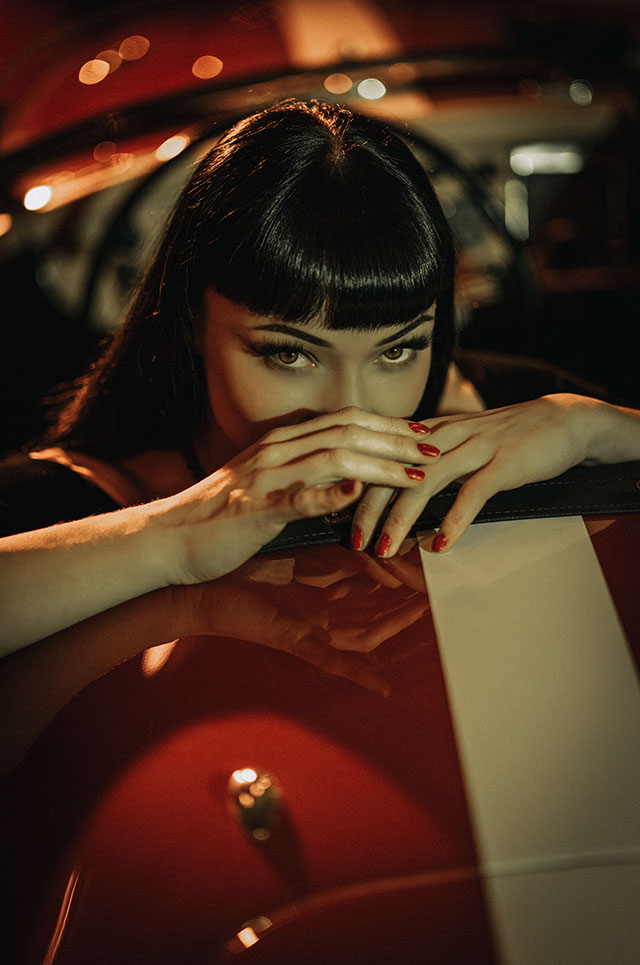
Leica S3 with Leica 100mm Summicron-S f/2.0. © Milan Swolfs.
The Leica S2 (2009) was introduced as the successor to the Leica R series, a full-frame manual-focus DSLR. While Leica had long been a pioneer in the small/full-frame format, in 2009, they took a bold step into larger-sensor territory with the launch of their first medium-format camera – the Leica S2. Designed in collaboration with Meinzer Design of Dortmund, Germany (the same firm behind the Leica R8), the S2 was a groundbreaking departure from traditional medium-format systems.
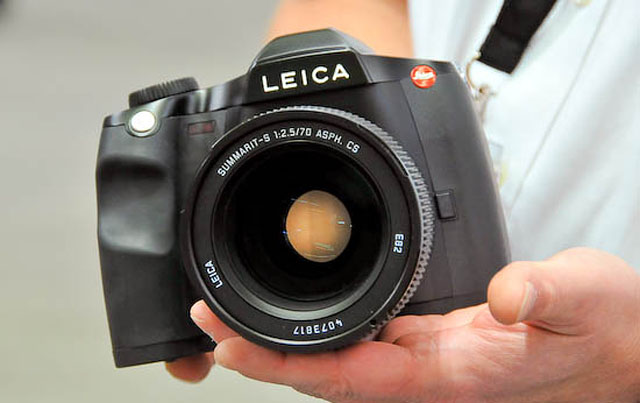
Leica S2 working prototype of a 37.5 MP medium format digital camera as presented at Photokina 2008 with the 70mm Summarit-S ASPH CS autofocus lens.
Unlike other medium-format cameras of its era – such as the Hasselblad H series and Phase One modular systems, which were primarily built for studio work – Leica redefined the category by creating a fully weather-sealed, handheld medium-format DSLR. Built from the ground up with a native S-mount and a 37.5MP sensor, the S2 became the first practical medium-format camera designed for outdoor use, similara to dSLR in size and handling.

Leica's vision for the S-system
Leica set out to improve upon existing medium-format digital backs and cameras by introducing a system that combined the image quality of medium format with the usability and handling of a 35mm DSLR. Their goals included:
- Delivering a simple, intuitive, yet highly customizable control interface.
- Offering both a focal plane shutter for fast, available-light shooting and a CS (central shutter) for high-speed flash sync.
- Extending battery life beyond what was typical for medium-format systems.
- Ensuring superior build quality with extensive weather and dust sealing – on both the body and lenses – to take medium format beyond the studio.
- Enhancing camera responsiveness and shooting speed
- Improving focus accuracy.
- Incorporating DSLR-like conveniences such as dual memory card slots, HDMI output, Wi-Fi capability, and customizable presets.
- Setting new standards in optical performance across the entire lens lineup, with faster maximum apertures, organix image quality and minimal need for software correction.
Though the S-series featured a single-point autofocus system – slow by modern standards – it is reliable. Users had to master the "focus and recompose" technique, which, while requiring skill, ultimately became a rewarding method for precise focusing (you opint the focus point to where the focus should be, then compose the frame while maintaining the focus distance).
From the S2 to the S3, the Leica S lineup consistently offered dual memory card storage, supporting both CF and SD cards – ensuring flexibility and redundancy for photographers in the field.
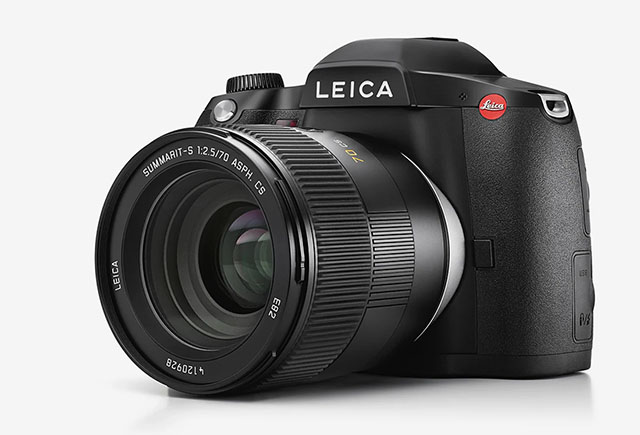
Leica S3 (2020) with the 70mm Summarit-S f/2.5. List price at introduction was $19,995.
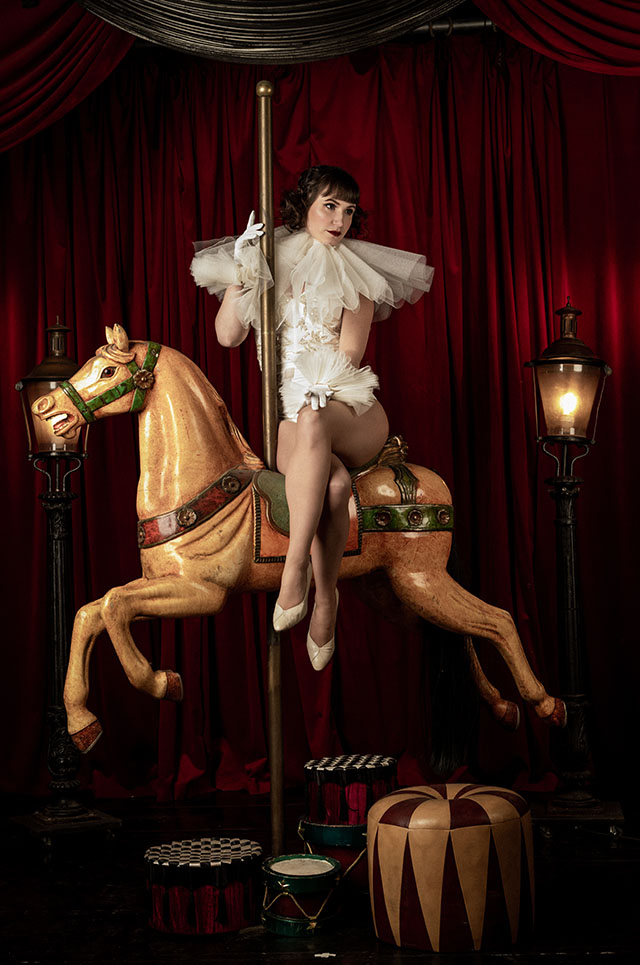
Leica S007 with Leica 70mm Sumarit-S f/2.5. © Milan Swolfs.
Who is the Leica S for?
The Leica S system was primarily designed for professional landscape and portrait photographers who demanded the highest image quality. However, in my experience, many passionate amateurs were also drawn to it, appreciating the unique satisfaction that comes with using the system.
Despite its capabilities, the S remains a rare sight – even among dedicated Leica users. It’s uncommon to see in the wild, yet the L User Forum and Red Dot Forum still maintains an active section for S-system enthusiasts, proving its loyal following.
This is not a camera built for fast-paced action, wildlife, bird photography, or sports. However, I have successfully used it for event coverage and, most importantly, as my go-to tool for portrait photography.
Why the Leica S is my weapon of choice
If you've ever worked with me, you know I shoot slowly and deliberately. I approach photography with a clear vision of the final result and always share that vision with my models. To me, photography is 10% technique and 90% communication.
From the moment I first saw the Leica S and flipped through the pages of S Magazine, I knew this camera was special. Its tank-like build, intuitive four-button design, and breathtaking image quality immediately drew me in.
I still remember making the bold decision to trade my first Noctilux f/0.95 to acquire my first Leica S2 system. With just the 70mm f/2.5 kit lens in hand, I was hesitant at first. My good friend and dealer, Patrik, let me borrow the camera to test, and from the very first shots, I was hooked. The colors, sharpness, and beautiful fall-off were mesmerizing – especially at a time when Leica’s SL system and SL APO lenses didn’t yet exist.
Using the S system gave me the same thrill as shooting with a Leica M rangefinder – that pure, tactile joy of nailing a shot. The massive optical viewfinder allowed for precise composition, and while the shutter was loud, it had a wonderfully analog feel.
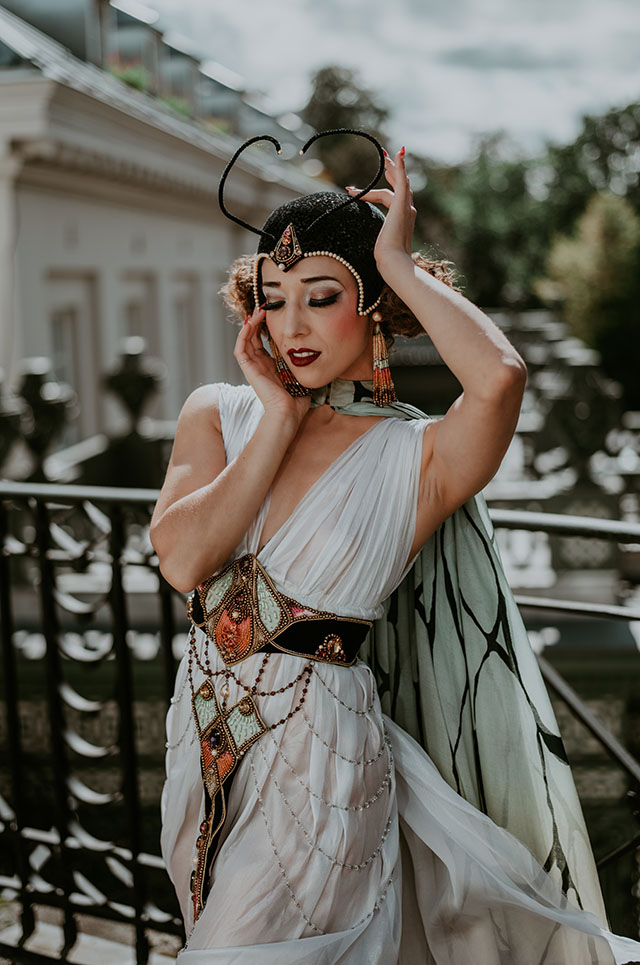
Leica S3 with Leica 70mm Summarit-S f/2.5. © Milan Swolfs.
Over the years, I have used every Leica S camera – from the S2 to the S3 – and today, the S3 remains my main camera for serious work. That said, the S is a heavy camera, and working with it for an entire day can be physically demanding. I’ve traveled with the S system and up to three lenses, but unless you're deeply committed to your photography, I wouldn’t necessarily recommend it. This is a camera that rewards patience and precision – but it also demands a lot in return.
So why do I still choose the S over any other system today? Three reasons: the lenses, the sensor, and the files.
The image files are incredibly malleable, and the photos feel organic – the perfect blend of sharpness, contrast, and just the right amount of bokeh. I can pull details from deep shadows, recover highlights effortlessly, and focus entirely on what matters most – starting with the model and working outward to the surroundings. The images pop, and when I nail the shot, I know the file will give me everything I need to achieve my vision.
Most importantly, the photos straight out of the camera already look stunning. The colors are exceptionally true to life, and the sensor provides that extra something – a depth and richness that sets it apart from standard full-frame sensors.

The sensor: The heart of the Leica S
At the core of the Leica S system is its Pro Format sensor, measuring 30×45mm – a full 60% larger than a standard full-frame (24×36mm) sensor. While it’s not as large as a traditional 645 medium format sensor, it retains a 0.8x crop factor, resulting in wider effective focal lengths.
For example, a 35mm S lens translates to a 28mm equivalent in full-frame terms: 35mm × 0.8 = 28mm full-frame equivalent
This unique sensor size strikes the perfect balance – offering the enhanced image quality and depth of medium format while remaining more compact and manageable than traditional medium-format systems.
I’ll dive deeper into S lenses in a future post, but for now, let’s take a look at the history of the Leica S system.
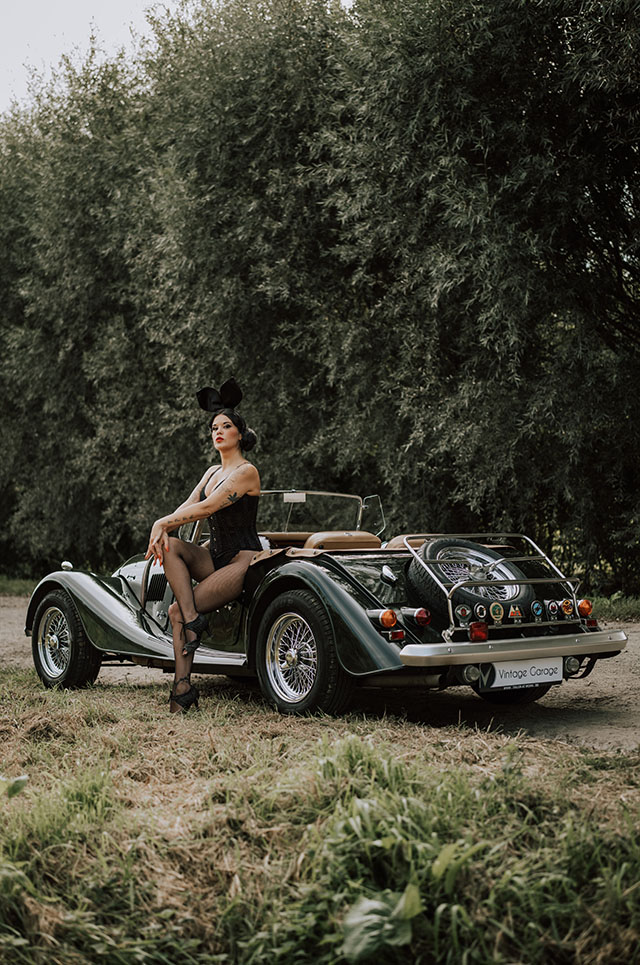
Leica S3 with Leica 70mm Summarit-S f/2.5. © Milan Swolfs.
The evolution of the Leica S:
Leica S2 (2008) – A revolution in medium format
In 2008, Leica introduced the S2, a groundbreaking 37.5MP Kodak CCD sensor camera powered by the Maestro image processor. Unlike traditional modular medium-format systems – often bulky and designed primarily for studio use – the S2 redefined medium format by packing a large sensor into a 35mm DSLR-sized body.
At its core, the S2 featured Leica’s latest-generation 6µm pixel architecture Kodak CCD sensor, delivering a signature look with deep color depth and tonal range.
The ISO range of the S2 spanned 160 to 1250, though in practical use, I wouldn’t recommend going beyond ISO 320–640. However, with recent software improvements in Adobe Lightroom, noise reduction makes ISO 1250 more usable than before.
Leica S (Typ 006) (2012) – Refining the classic
By 2012, Leica refined the S2 concept with the S (Typ 006). While it retained the same 37.5MP CCD sensor, several key improvements made it a more refined and user-friendly system:
- Integrated GPS for geotagging images
- Faster autofocus for better usability
- Double the buffer rate for quicker shooting
- Better high ISO performance (up to ISO 1600 in practice it was not that a big improvement over the S2)
- A redesigned menu system for a more intuitive user experience
Interestingly, Leica didn’t name this camera the S3 but instead opted for S (Typ 006) – in line with their naming conventions at the time (e.g., M240, M246).
A CCD sensor corrosion warning
Like the Leica M9, both the S2 and S006 are susceptible to CCD sensor corrosion. If you’re considering a second-hand purchase, check whether the sensor has been replaced by Leica Customer Care.
Leica S (Typ 007) (2015) – The CMOS revolution
In 2015, Leica introduced the S007, its first medium-format camera with a CMOS sensor. While the CCD look of the S2/S006 was highly regarded, the CMOS sensor brought vastly improved ISO performance, making the S007 a more versatile tool for low-light and professional work.
At first glance, the S007 looks nearly identical to its predecessor, the S006, which in turn resembles the original S2. The core design philosophy remained the same, but under the hood, Leica introduced over 80 improvements – most notably:
- New 37.5MP CMOS sensor, co-developed with CMOSIS
- Maestro II image processor for faster performance
- 15 stops of dynamic range for stunning tonal control
- Expanded ISO range (100–12,500), with practical usability up to ISO 3200
- 3.5 FPS burst rate, making it the fastest medium-format DSLR of its time
Leica also refined ergonomics and controls, while dramatically upgrading internal components to improve image quality and shooting speed.
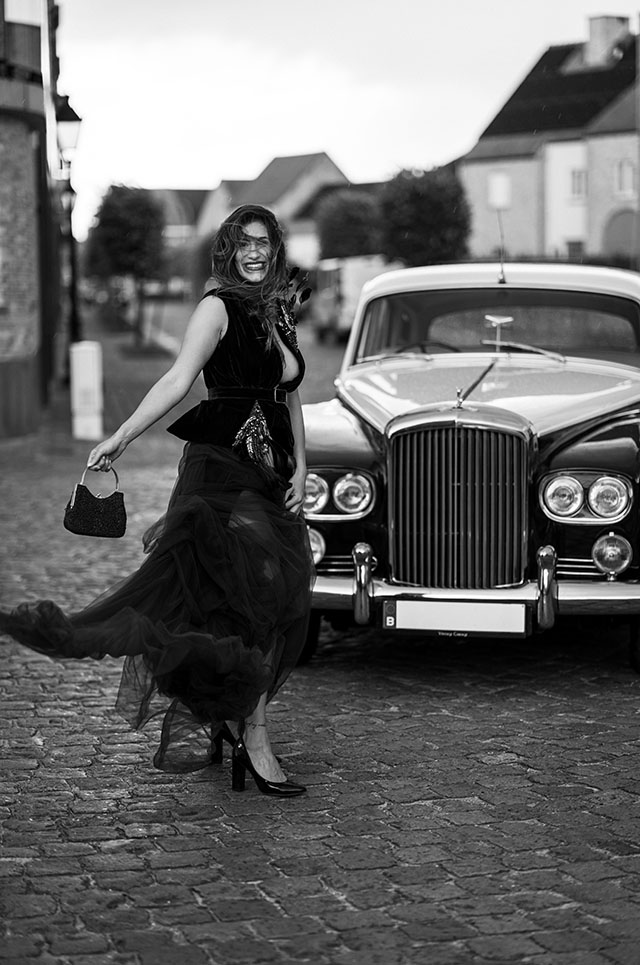
Leica S3 with Leica 100mm Summicron-S f/2.0. © Milan Swolfs.
The Live View Revolution
One of the most significant upgrades was Live View – the first of its kind on a Leica S camera. With a 60 fps refresh rate and accurate exposure simulation, Live View introduced a new level of precision:
- Contrast-detect autofocus, allowing pinpoint accuracy anywhere in the frame
- Joystick-based focus selection, ideal for off-center compositions
- Highlight/shadow warnings, focus peaking, and exposure simulation – perfect for ND filters and complex lighting setups
I often use Live View for critical focusing or when working on a tripod – especially after switching to continuous lighting by Harlowe Creators, which lets me shoot at lower ISO settings without increasing noise.
4K Video in a Medium-Format Body
The S007 was also the first medium-format camera to offer 4K video recording. However, video mode cropped the sensor to Super 35 rather than utilizing the full lens coverage – a limitation later addressed in the Leica S3.
Final thoughts on the Leica S 007
While not a radical redesign, the Leica S (Typ 007) represented a major leap forward. It successfully blended the legendary image quality of its predecessors with modern conveniences, making it the most versatile S-series camera yet. For those looking to balance medium format depth with high-speed shooting, low-light performance, and advanced focusing tools, the S007 remains a powerhouse.
The Last One: The Leica S3
The Leica S3 (2020), the final model in the S-System lineup, refined Leica’s medium-format DSLR concept to near perfection.
Though announced in 2018, the first deliveries only started in late 2020. The major update? A 64MP CMOS sensor, while retaining the 45mm x 30mm sensor dimensions that define the Pro Format of the S-System.
I had the chance to beta test the S3 in January 2019, and while my early version had some minor technical issues, Leica ironed them out. Today, I can confidently say that my S3 has never let me down – it remains a workhorse for serious photography.
A familiar body with a new heart
The S3 shares much with the S007 – same body, same controls – but the sensor received a major upgrade. Until the S007, Leica had stuck with 37MP CCD and CMOS sensors. With the S3, they jumped to 64MP while introducing a dual-gain architecture for better dynamic range and ISO performance.
Leica also expanded the ISO range from 100-12,500 (S007) to 100-50,000 (S3) – a 1 to 1.5-stop improvement. From my experience, the S3 is usable up to ISO 6400, though the S-System demands high-quality lighting to truly shine.
The Leica S3’s high-ISO images retain a wonderful grain, making it a great tool for black-and-white conversions. While most Leica purists prefer the Leica M Monochrom series, the S-System delivers exceptional B&W tonality.
Refined color science & the red advantage
Leica reformulated the color filter array in the S3, and the improvement is most noticeable in red tones. The reds are now more accurate, which I tested extensively in a shoot featuring a red Lamborghini Diablo – the results were stunning.
Beyond color, Leica also extended exposure times, which is more relevant for landscape photographers than my portrait work.
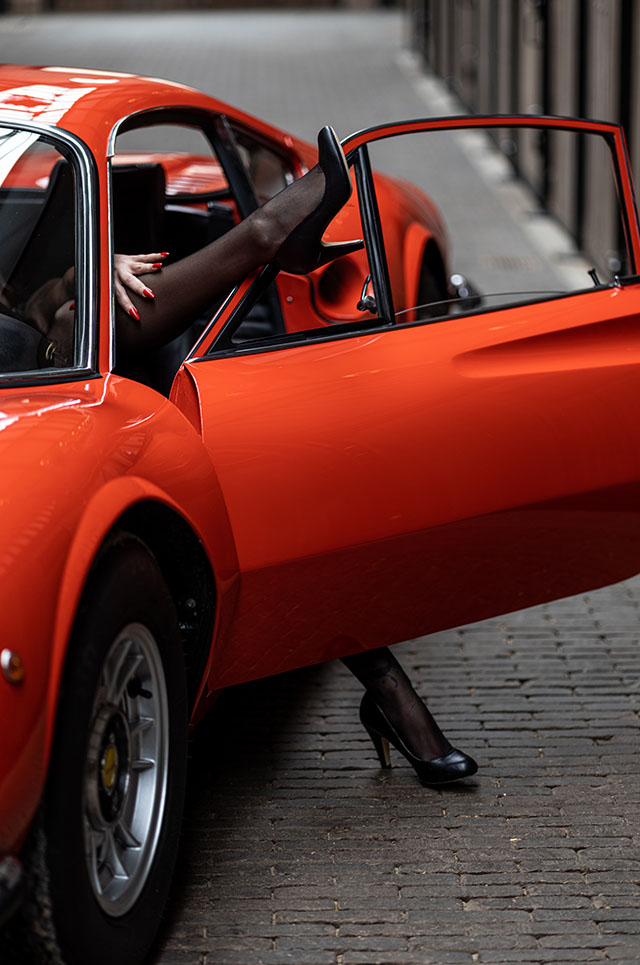
Leica S3 with Leica 100mm Summicron-S f/2.0. © Milan Swolfs.
Why I Switched from the Leica S 007 to the Leica S3
My main reasons for upgrading:
- Higher resolution (64MP vs. 37MP)
- Better skin tones
- More accurate reds
At my latest exhibition, many prints were shot on the S3, and I personally printed large-scale images for both clients and my home – the results were simply out of this world.
The S3 might seem old-school compared to modern digital cameras like the M11 or SL3, but for me, the files remain unmatched. The tonality, the fall-off, and the organic quality of S-System images have no equal.
Even though S lenses are technically slower than some M and SL lenses, they are in a league of their own in terms of rendering and quality.

Leica S3 with Leica 35mm Summarit-S f/2.5. © Milan Swolfs.

Stay around, get a free eBook
Sign up for the newsletter here and enjoy a free eBook by Thorsten Overgaard.


Handling & Focusing
The S3 features a 3" LCD with 920,000 dots – clear and bright enough for checking focus, menus, and histograms.
- Autofocus: Slightly faster than the S007, but still not fast by modern standards. The Low-light AF: Can hunt a little, but the phase-detect AF is extremely accurate when locked.
I use back-button focusing, activating AF with the joystick – this gives me the most precise control over focus.
A tricky lens: The Summicron-S 100mm f/2 has an extremely shallow depth of field, making autofocus more challenging. Sometimes, even when focusing on the eyes, the eyelashes or eyebrows end up in focus. For best results, I use AF with manual fine-tuning (MF override).
Mirror, Balance & Stability
- The mirror slap is smooth and quiet
- No in-body stabilization, but the camera balances well in hand
- The heft of the camera actually helps with stability
4K Video – Now with full sensor readout
The S3 finally allows full-sensor 4K recording – something the S007 lacked (which only recorded in Super 35 crop).
However, there’s a limitation:
- No HDMI output for 4K recording
- 4K can be recorded directly to an SD card
This was a disappointment for videographers, but since I primarily shoot stills, it wasn’t a dealbreaker for me.
Final thoughts: The end of an era
The Leica S3 represents the pinnacle of the S-System – a refinement rather than a revolution, but a worthy send-off for one of Leica’s most ambitious projects.
While the S-System is now discontinued, and Leica’s focus has shifted toward the SL and M lines, the S3 remains my go-to tool for serious work.
The files have a unique quality that modern full-frame cameras (24x36mm) can’t match. If you’ve ever opened an S-Series RAW file, you’ll immediately recognize the depth, pop, and richness that define the system.
For those willing to embrace its weight, deliberate pace, and niche quirks, the S3 is an absolute masterpiece – and, for me, one of the best cameras Leica has ever made.
What I Love About the Leica S Line:
The files – Nothing comes close
The Leica S files are simply unmatched. They offer a unique combination of depth, dynamic range, and tonal richness that I haven’t found in any other system. The ability to push shadows and highlights almost endlessly makes them incredibly malleable in post-processing.
Beyond just technical performance, the color science is sublime. Skintones straight out of camera are near perfect, with rich, natural colors that don’t require much correction. The falloff from in-focus to out-of-focus areas is smooth and organic, lending images a cinematic quality that makes them instantly recognizable.
The Glass – The Best in the World
While my M lenses are my jewels, the S lenses are my workhorses – and the best lenses ever made for my kind of photography.
- Cinematic yet sharp – They sit perfectly between the extreme sharpness of SL lenses and the magical rendering of M glass.
- Beautiful transitions – The way they handle depth of field and tonal transitions is unmatched.
- Mechanical manual focus – Unlike modern fly-by-wire focusing, S lenses still have real mechanical MF, making manual focusing a tactile, precise experience.
SL lenses may be technically sharper with higher microcontrast, but for portraiture and artistic work, nothing beats the organic, filmic quality of S lenses.
The viewfinder – A true optical experience
While I’ve grown accustomed to EVFs in recent years, there’s still something magical about an optical viewfinder – especially one as large and bright as the S-System’s. Looking through real glass, instead of an electronic screen, connects you more intimately to the scene.
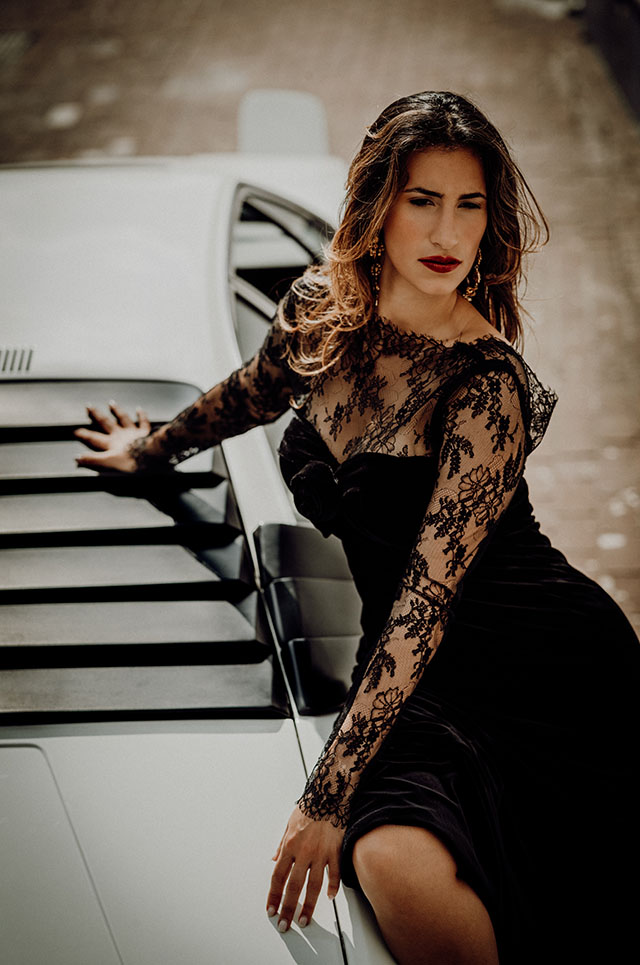
Leica S3 with Leica 100mm Summicron-S f/2.0. © Milan Swolfs.
The Leica S System – A real camera, not a computer
The Leica S still feels like a true camera – not just a digital processing device.
- The mirror slap
- The tactile focusing
- The shutter sound
All of these elements come together to make shooting on an S-System camera a visceral experience. Unlike modern mirrorless cameras that feel more like tech gadgets, the S still feels like a camera in the purest sense.
Build quality & ergonomics
The S-Series build quality is second to none. It feels robust, luxurious, and purpose-built.
Even though modern Leica cameras have moved to more complex interfaces, I still prefer the clean and intuitive 4-button layout of the S cameras.
The Leica S3 – The rebel of the camera world
While the rest of the industry has gone mirrorless, the S-System stubbornly sticks to its roots.
The S3 is like the enfant terrible of the camera world – it doesn’t conform, it doesn’t rush, it just does what it does best, slowly but surely.
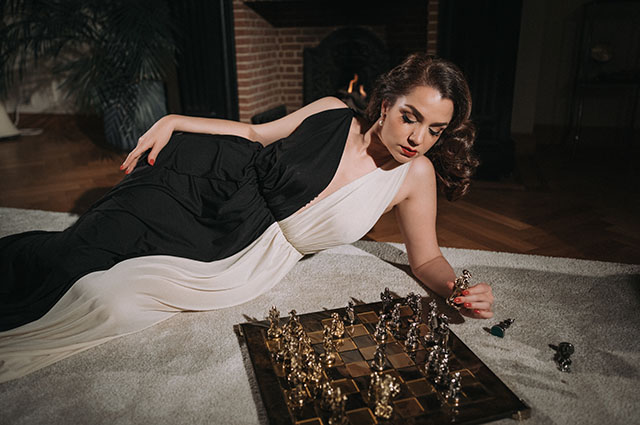
Leica S3 with Leica 35mm Summarit-S f/2.5. © Milan Swolfs.
What could be improved?
- Faster Autofocus – A more reliable AF system in low light and more AF points would be game-changing. If Leica could match the AF performance of the SL2, the S-System would be unstoppable.
- Better Focus Confirmation – If Leica added focus aids like those found in the M, Q, and SL cameras, it would make manual focusing far easier.
- Higher Resolution – A 100MP sensor would bring the S-Series into the future.
- Mirrorless Future? – While I love the DSLR experience, I wouldn’t be opposed to an EVF-based S camera – as long as there’s an adapter for S lenses.
I dream of using the Summicron-S 100mm f/2 on a medium-format mirrorless Leica with advanced autofocus and multiple AF points?
| |
|
|
|
|
| |
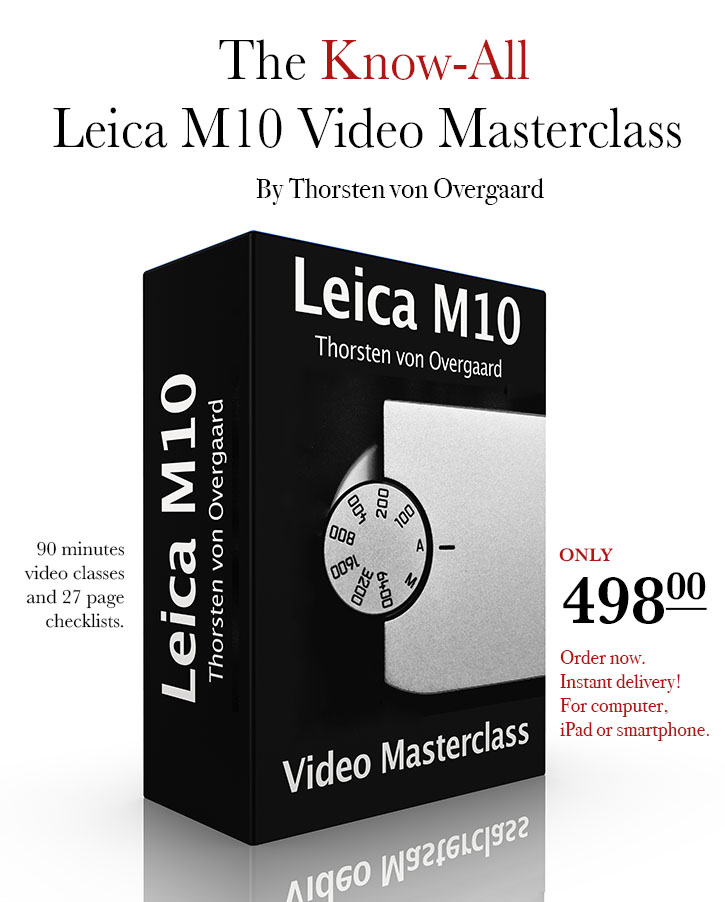 |
|
| |
|
|
|
|
| |
Full Leica M10
Video Masterclass
and Street Photo Pack
11 video classes on Leica M10
with 27 page checlists.
+ 11 video classes on Street Photography
with the Leica M10.
+ 8 Bonus videos on
photography.
+ Styles for Capture One for Leica M10.
+ Lightroom Presets for Leica M10.
+ More black and white syles and presets.
Normal price $1,297.00
Save 55%
Only $583.00
USE CODE: "ILOVEM10"

Order now. Instant delivery via email.
100% satisfaction or money back.
Item #1801-0223 |
|
Leica M10
Know-All
Masterclass Videos
90 minutes of video classes
27-page checklists for computer,
iPad or smartphone.
Only $398.00

Order now. Instant delivery via email.
100% satisfaction or money back.
Leica M10
Leica M10-P
Leica M10-R
Leica M10M
Item #1801-0917 |
|
| |
|
|
|
|
| |
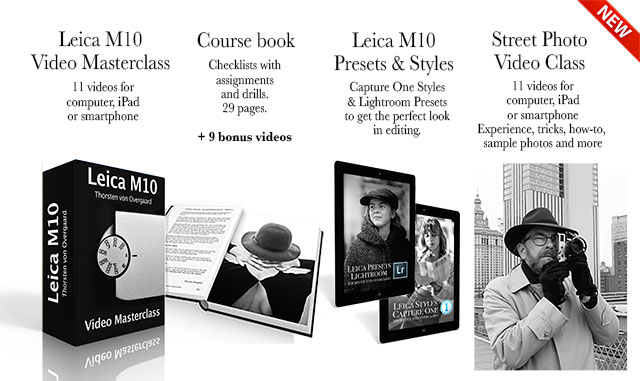 |
|
| |
|
|
|
|
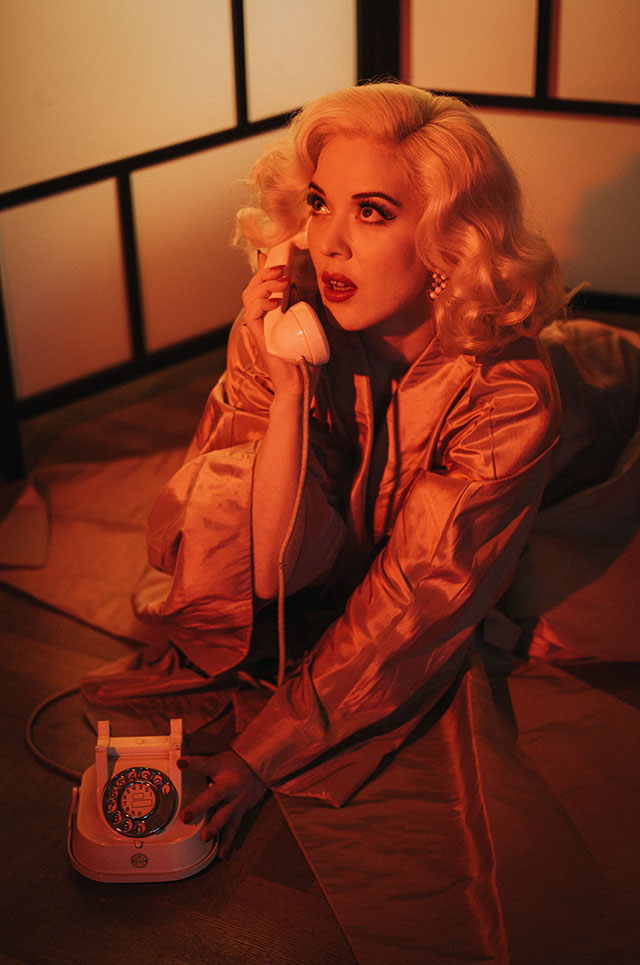
Leica S3 with Leica 70mm Summarit-S f/2.5. © Milan Swolfs.
My favorite Leica S lenses
Leica set out to create a new standard in optical quality with the S lenses, prioritizing superior design over software corrections. While many manufacturers rely on digital processing to fix optical flaws, Leica aimed for optical excellence straight from the lens, reducing aberrations without artificial intervention.
This commitment to quality is reflected in Leitz Cine's Thalia lenses, which are based on Leica’s S medium format glass.
As Leitz Cine describes:
"Ranging from 20mm to 180mm, the Thalia lenses are built upon Leica’s S medium format glass, renowned for its incredible portrait rendering, rich colors, and stunning skin tones."
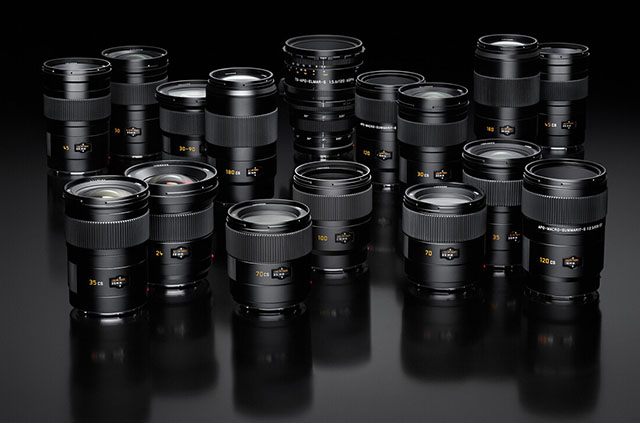
A carefully crafted lens lineup
Leica took time to develop a complete S lens ecosystem, covering focal lengths from 24mm to 180mm. While most of the promised lenses made it to production, the rumored 350mm telephoto was never released.
Today, the lineup consists of nine native autofocus lenses (eight primes and one zoom), plus a manual-focus 120mm tilt-shift lens, originally designed by Schneider.
When the first-generation S2 camera debuted in 2008, it launched with two initial lenses: the 70mm and 180mm. Shortly after, the 35mm and 120mm were introduced, forming the foundation of the system. Over the years, additional designs – including the 30mm, 45mm, and 100mm – filled in the gaps, creating a well-rounded selection for medium format shooters.
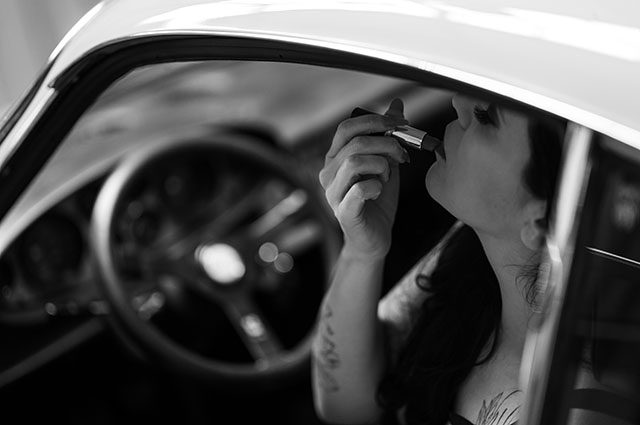
Leica S3 with Leica 100mm Summicron-S f/2.0. © Milan Swolfs.
Optical speed & performance
Leica’s S lenses are not the fastest in aperture compared to full-frame primes, but within the medium format world, they stand out. Compared to Hasselblad H lenses and Schneider Kreuznach Blue Ring lenses, the S lenses offer faster apertures, making them better suited for available-light shooting.
That said, the S system thrives in good lighting – its lenses aren’t designed for extreme low-light conditions but instead excel in delivering natural, rich, and cinematic rendering.
Important note for second-hand buyers
If you’re considering a second-hand S lens, check whether the autofocus motor has been replaced. In 2015, Leica acknowledged a known issue: a firmware update increased AF speed, but it also caused premature motor failures in some lenses.
- If the lens was serviced after 2017, it likely has the updated non-failing motor.
- If serviced before 2017, it may still have the old motor and could be prone to failure.
Verifying service history before purchase can save you from potential autofocus issues down the line.
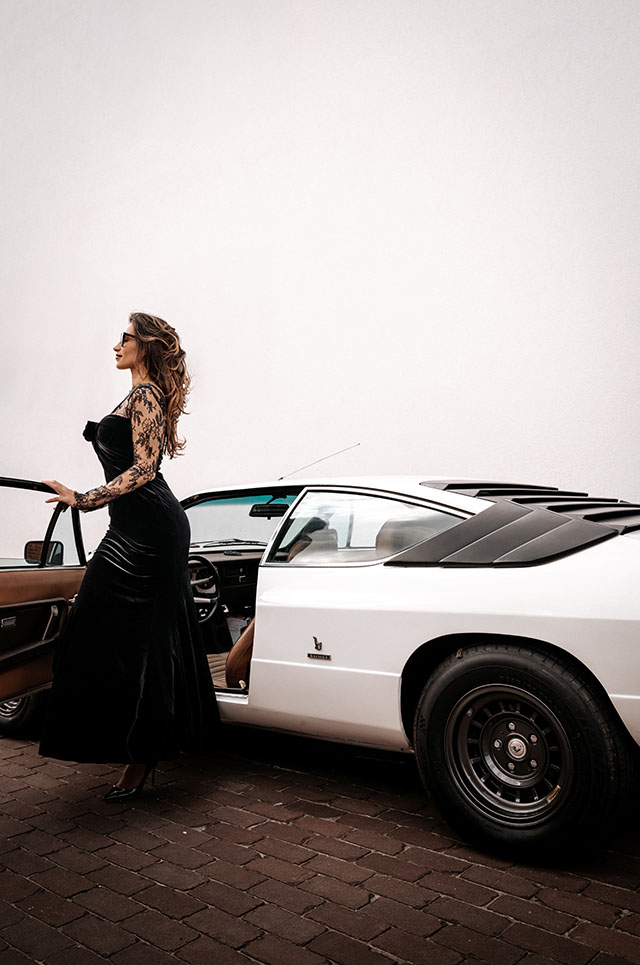
Leica S3 with Leica 35mm Summarit-S f/2.5. © Milan Swolfs.
Leica Summarit-S 35mm f/2.5
(Equivalent to 28mm f/2 in rull frame)
While I don’t often shoot 28mm on full-frame, the Summarit-S 35mm f/2.5 has completely won me over in the S system. It offers natural rendering, subtle yet beautiful bokeh, and minimal distortion – the latter of which is easily corrected in post.
As one of the original four lenses introduced for the system and the first wide-angle option, the 35mm Summarit-S remains a standout. With a fast f/2.5 aperture and a versatile 28mm equivalent field of view, it excels in low-light situations and is an excellent choice for environmental portraits, allowing for greater scene inclusion without excessive perspective distortion.
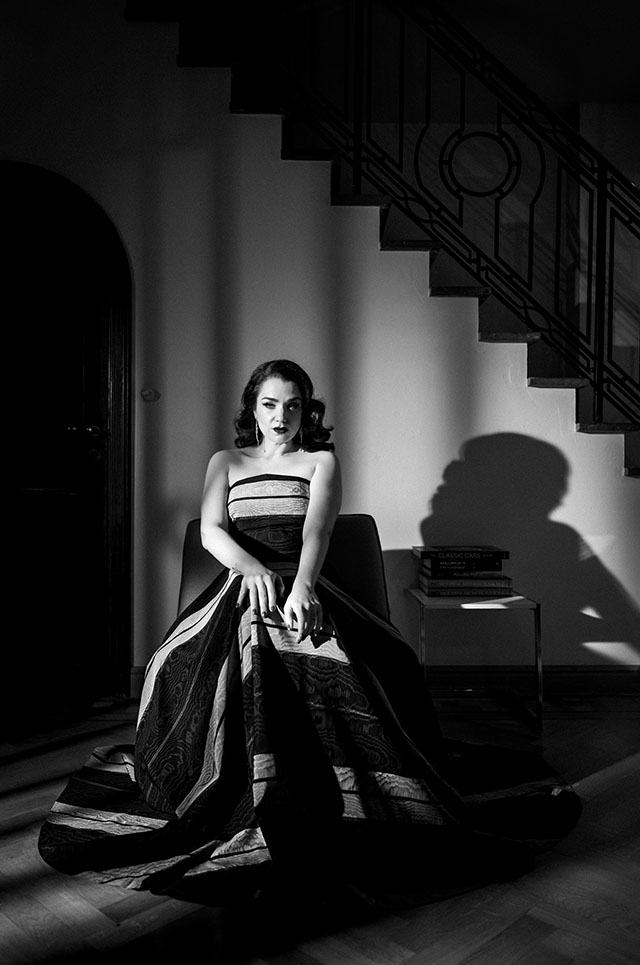
Leica S3 with Leica 35mm Summarit-S f/2.5. © Milan Swolfs.
Leica Elmarit-S 45mm f/2.8
(Equivalent to 35mm f/2 in full frame)
I’ve used the Elmarit-S 45mm f/2.8 extensively. This lens offers a natural, balanced look, behaving much like a 50mm on full-frame while maintaining the wider perspective of a 35mm.
In terms of optical quality, this is one of the sharpest lenses in the S lineup. It delivers stunning image clarity, beautiful out-of-focus rendering, and a natural depth that makes it a fantastic choice for both portrait and documentary work. However, it is quite heavy and long, which might be a consideration for those looking for a more compact setup. The only real drawback is its minimum focus distance (MFD) of 0.6m, which isn’t ideal for close-up work.
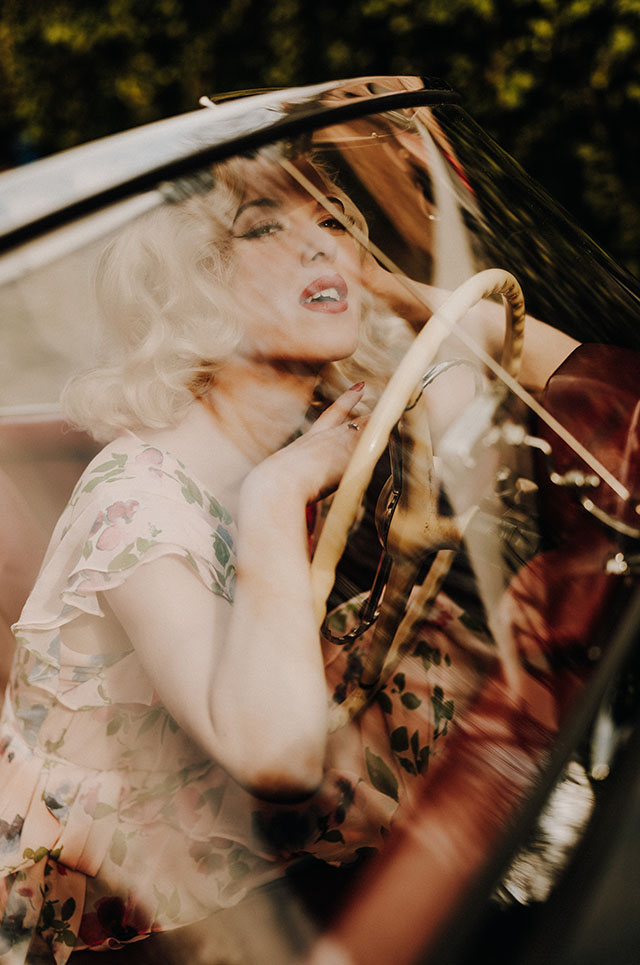
Leica S3 with Leica 70mm Summarit-S f/2.5. © Milan Swolfs.
Leica Summarit-S 70mm f/2.5
(Equivalent to 55mm in full frame)
The Summarit-S 70mm f/2.5 is the go-to lens for most photographers entering the S system. Often referred to as a "kit lens," it is far from ordinary – this lens delivers exceptional image quality and a unique rendering that reminds me of the 50mm Summilux f/1.4 in M mount.
With its gorgeous bokeh and a beautifully natural look, the 70mm Summarit is perfect for portraits and close-ups, thanks to its minimum focus distance (MFD) of 0.5m. As the very first lens introduced in the S system, it serves as a fast and reliable normal lens, roughly equivalent to a slightly longer 50mm on full-frame.
It's also the lightest and most compact of the S lenses, making it a great everyday choice. Modeled after the legendary 50mm Summilux-M ASPH, it shares the same crisp in-focus rendering with smooth, dreamy bokeh. This is by far my most-used S lens, and likely one of the most reliable in my portfolio.
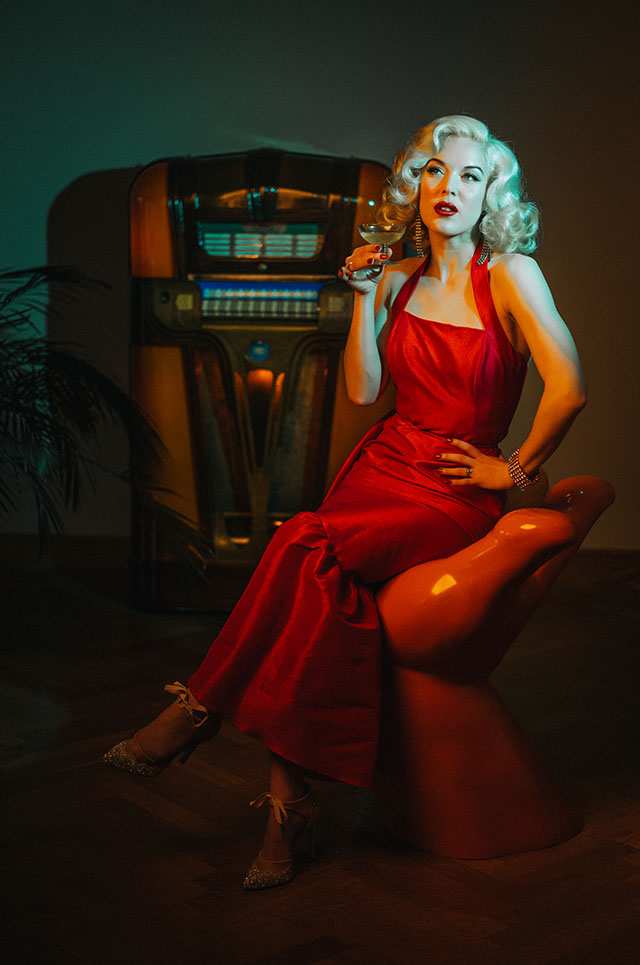
Leica S3 with Leica 70mm Summarit-S f/2.5. © Milan Swolfs.
Leica Vario-Elmar-S 30-90mm f/3.5-5.6 ASPH
Originally the most expensive lens in the S portfolio, the Vario-Elmar-S 30-90mm can now be found for less than half its original price on the used market. Functionally, it’s equivalent to a 24-70mm zoom in full-frame terms, offering versatility at the cost of speed compared to the prime lenses in the system.
While the f/3.5-5.6 aperture range makes it slower than fixed primes, it still delivers excellent image quality and is incredibly useful for fast-paced shooting environments. I’ve used this lens during photoshoots where I didn’t have time to swap lenses, or when I needed the flexibility to switch between a wide and portrait focal length on the fly.
At 90mm and f/5.6, it still provides decent background separation, though not quite on the level of a fast prime. My main issue with zooms in general – especially coming from a prime lens background – is that I often find myself using them at their longest focal length, essentially treating them like a fixed lens instead of taking advantage of their variable focal range.
If the Vario-Elmar-S 30-90mm had a faster maximum aperture, I might use it more frequently. However, it’s an excellent travel lens if you're willing to carry the heavier S system. It covers landscapes, environmental shots, and portraits well during the day, and for low-light or shallower depth-of-field portraits, pairing it with the Summicron-S 100mm f/2 would be ideal.
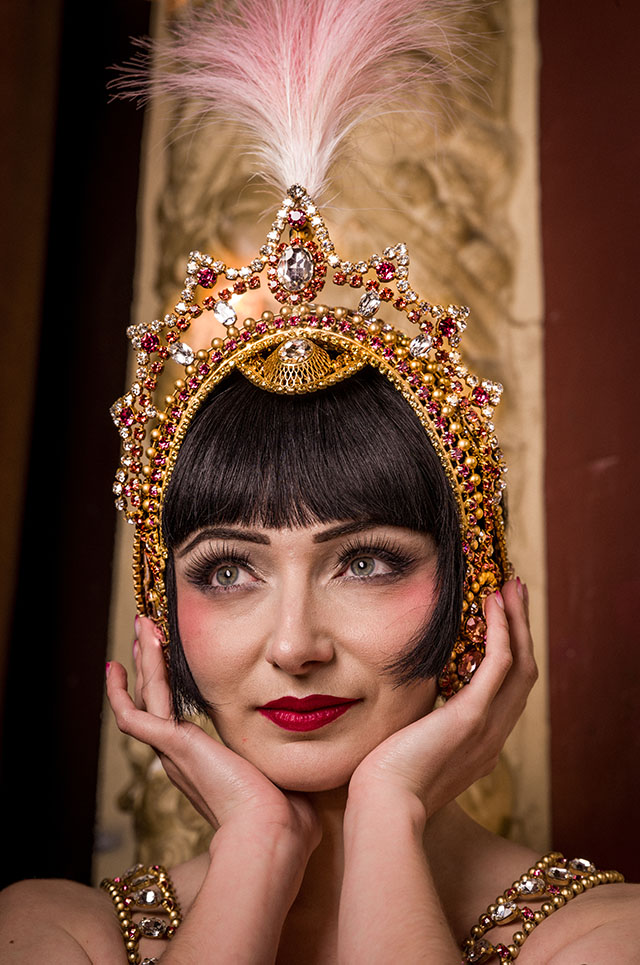
Leica S007 with Leica 30-90mm Vario-Elmar-S f/3.5-5.6. © Milan Swolfs.
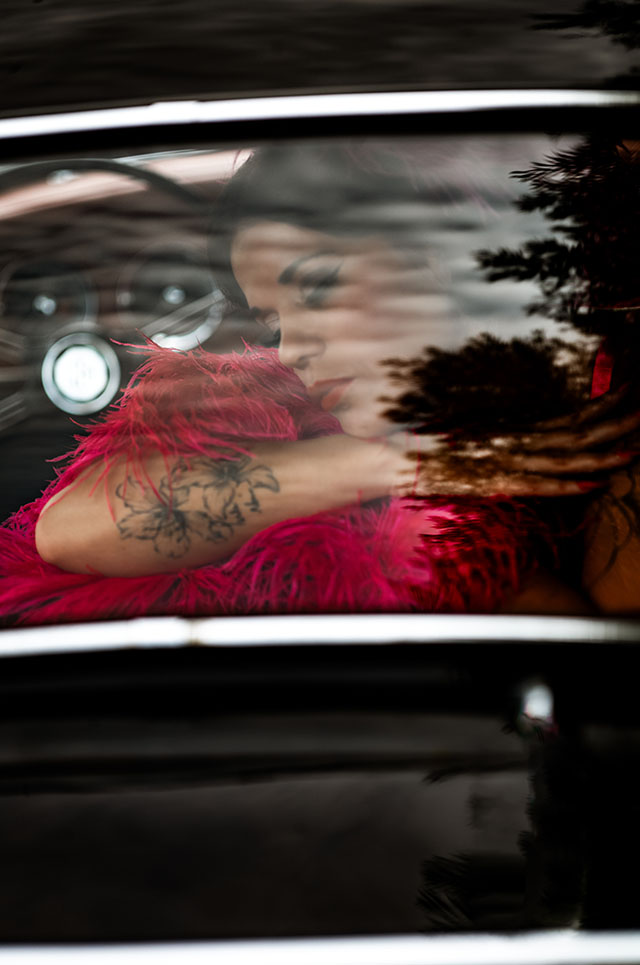
Leica S3 with Leica 100mm Summicron-S f/2.0. © Milan Swolfs.
Leica Summicron-S 100mm f/2
(Equivalent to 80mm in full frame)
This is the Noctilux of the S lenses – the most unique and characterful lens in the entire S lineup. It has a distinct rendering style, setting it apart from the rest of the system. As I mentioned earlier, it’s a tricky lens to master, but when you nail the shot – oh boy, it’s magic.
Some of my all-time favorite portraits have been taken with this lens. The 3D pop and subject separation it creates are truly special, while still maintaining the sharpness and signature look of the S sensor. While it may not be as surgically sharp as the APO-Macro-Summarit 120mm, it offers a beautiful softness and organic quality that makes it perfect for portraiture – especially when photographing women.
For many, this lens alone is a compelling reason to invest in the S system. If you’re looking for a lens that delivers gorgeous depth, dreamy bokeh, and a unique character, the Summicron-S 100mm f/2 is simply unmatched.

Paris Hilton. Leica S3 with Leica 120mm APO-Macro-Summarit-S f/2.5. © Milan Swolfs.
Leica APO-Macro-Summarit-S 120mm f/2.5
One of the first four lenses developed for the S system, the 120mm APO-Macro-Summarit-S is simply a masterpiece. With an equivalent focal length of roughly 100mm, this lens is astonishingly sharp, even wide open.
For me, this lens serves three key purposes:
- A phenomenal macro lens – offering 1:2 reproduction for detailed close-up work.
- An incredible telephoto option – the floating lens element ensures consistent sharpness from macro distances to infinity.
- A stunning portrait lens – though I personally favor the 100mm Summicron-S for its character, the 120mm delivers clinical precision and is ideal for subjects that benefit from a bit more definition.
With a 20% longer focal length than the 100mm and a close minimum focusing distance, the 120mm f/2.5 still produces an extremely shallow depth of field and beautifully soft bokeh, despite being half a stop slower.
While I tend to reach for the 100mm Summicron-S more often – because of its unique rendering – the APO-Macro-Summarit-S 120mm remains one of the sharpest lenses in the entire S lineup. It’s a fantastic choice, especially for male portraits or when precision and clarity are paramount.
Leica APO-Tele-Elmar-S 180mm f/3.5
(Equivalent to 135mm f/2.8 in full frame)
As the longest telephoto lens in the S lineup (since the teased 350mm was never released), the 180mm is optically perfect – apochromatically corrected and razor-sharp wide open.
It works well as a longer portrait lens, though I’ve never felt the need to buy it, as the 100mm and 120mm suffice for my needs. For close-up work, adding the ELPRO-S 180mm Close Focus Adapter shortens the working range without light loss.
CS (Central Shutter) lenses
CS lenses feature a leaf shutter, allowing flash sync up to 1/1000s (compared to 1/125s with the focal plane shutter). If you shoot strobes outdoors, CS lenses are invaluable, but they command a premium price.
Since switching to LED lighting, I no longer need CS lenses. If you use S lenses on the SL, CS functionality does not work.
Accessories & battery considerations
- Battery Issues: Older Leica BP-PRO1 batteries degrade over time, leading to write errors and sensor inconsistencies.
- Battery Grip: Adds bulk but improves portrait-mode handling.
- S to SL Adapter: Allows S lenses on the SL, retaining AF and weather sealing.
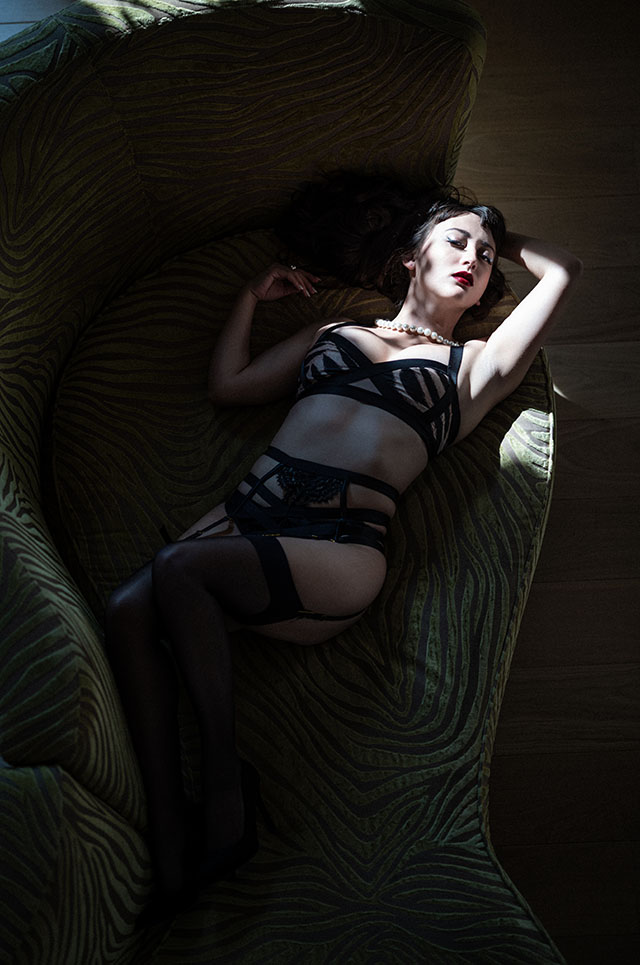
Leica S007 with Leica 100mm Summicron-S f/2.0. © Milan Swolfs.
Battery life & issues
Leica BP-PRO1 batteries, designed for the S007 and S3, are backward compatible with the S2 and S006. However, older batteries tend to degrade, especially in cold weather, leading to: Write errors Sensor inconsistencies (split sensor effect). If you're using an older S camera, consider getting newer batteries to avoid these issues.
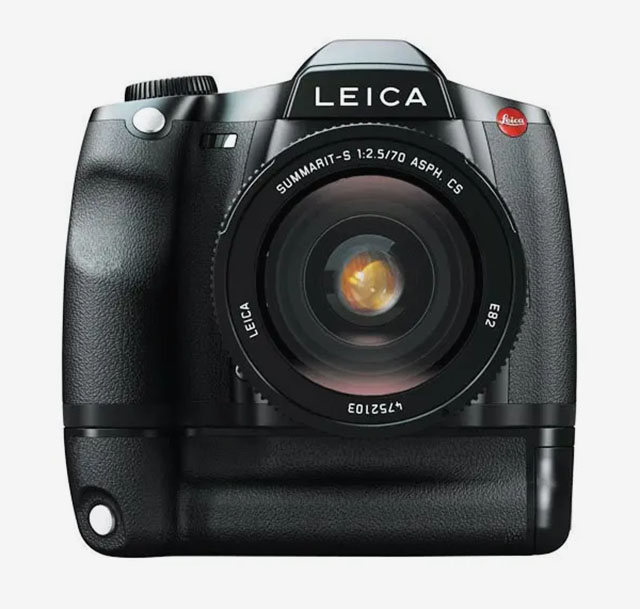
Leica S with handgrip that contains extra battery power.
The Leica S battery grip
I was initially very resistant to purchase this accessory because it makes the S camera even more bulky and heavy but since I shoot a lot in portrait mode the focusing makes it more easy for me to focus and recompose.
S to SL adapter
You can’t use the SL lenses on the S but you do can use the S lenses on the SL by using the S to SL adapter from Leica. My dear friend, great techno DJ and fellow Leica shooter Dave Clarke is a vivid fan of the S lenses and uses them on the SL with the S to SL adapter. You can use the SL focus aids and AF modes with the S lenses. The S to SL adapter is fully weather sealed and even has a tripod mount.
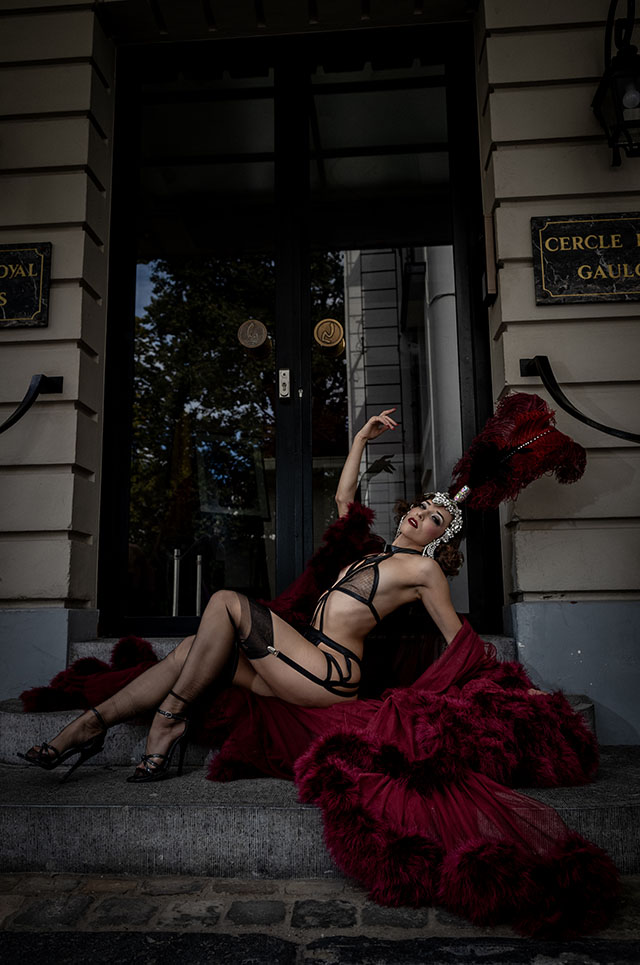
Leica S3 with Leica 35mm Summarit-S f/2.5. © Milan Swolfs.
S adapters to use other MF lenses
Leica offers a range of adapters for mounting Hasselblad H and V, Pentax 67, and Contax 645 lenses on the S system. I have personally used the Contax 80mm f/2 and found it to be an enjoyable option. While it doesn’t match the sharpness and contrast of native S lenses, it delivers a classic, pre-ASPH look with creamy bokeh – something wedding photographers highly appreciate.
The adapter was originally introduced with the S2 but remains compatible with all S cameras. However, while the Contax 645 lens supports autofocus in normal mode, AF functionality is disabled in live view. Unfortunately, stacking adapters – such as combining the S-to-SL adapter – does not work.
The Dream: A mirrorless S-system
If Leica were to develop a mirrorless S-System, it could open up a new chapter for medium format photography. Imagine existing S lenses seamlessly adapting to a next-generation body, SL and M lenses taking advantage of a larger sensor, and something as magical as a 75mm Noctilux rendering images with unparalleled depth on medium format. While the S3 may mark the end of an era, the idea of a future mirrorless Leica S remains an exciting prospect.
One thing is certain: the S-Series is more than just a system – it’s an experience. The files it produces, the craftsmanship of its lenses, and the purity of its shooting process set it apart from anything else in the medium format world. A future mirrorless S, with improved autofocus, refined focus aids, and full compatibility with these legendary lenses, could redefine what’s possible in high-end photography. Until that day comes, the S3 and its unmatched glass continue to be a testament to Leica’s relentless pursuit of excellence.
– Milan Swolfs
https://www.instagram.com/milanswolfsphotography
| |
|
|
| |
Thank you!
I want to extend my deepest gratitude to the people at Leica who have supported this journey – Stefan Schulz, now enjoying a well-earned retirement, and Stefan Janssen, who continues to steer the S system forward.
A special thanks to Stefan Daniel for the insightful discussions over the years. I also want to honor the memory of Jip van Kuijk, who sadly passed in 2025, and whose articles on the S system helped keep its spirit alive. To the team at Leica Store Miami, your dedication and enthusiasm for the S system have been truly inspiring. My dear friend Patrik Toussaint for his unwavering passion for the S and for getting me into the S system. And finally, to my friend Dave Clarke – our long conversations about S gear, photography, and great music have made this journey even more meaningful.
A heartfelt thank you as well to Andreas Kaufmann for his unwavering belief in the S system. His advocacy and dedication to keeping the S line alive have been instrumental in shaping Leica's vision for medium format photography.
The Leica S system is not just another camera system – it's a philosophy, a commitment to the craft of photography. No matter what the future holds, its legacy will endure. |
|
| |
|
|
| |
|
|
| |
Milan Swolfs
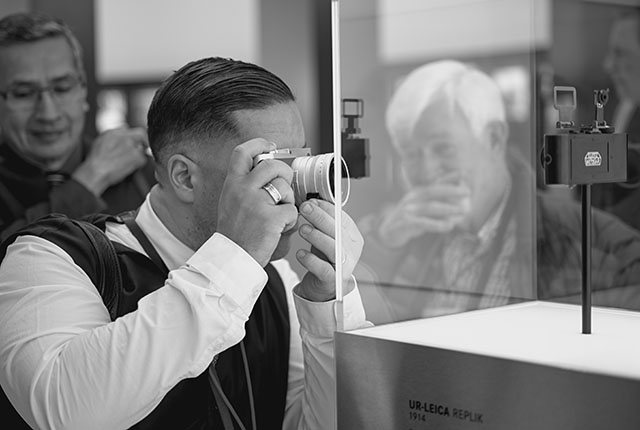
Milan Swolfs is a fine art portrait photographer from Antwerp, Belgium, renowned for his distinctive blend of burlesque and vintage aesthetics. His work channels the timeless Hollywood glamour of the 1920s and 1930s, capturing both men and women in bold yet elegantly refined portraits.
Beginning his career photographing Europe’s largest burlesque events, Milan later transitioned into fine art photography. As an ambassador for Leica Camera and Harlowe Creators, his work has been featured in LFI (Leica Fotografie International), Medium Format Magazine, and Viewfinder.
In 2022, he debuted his solo exhibition, Light of Seduction, at the Leica Store in Porto. Most recently, from late 2024 to early 2025, his latest exhibition, Echoes of Elegance: A Timeless Journey, was showcased at the Leica Store Beaumarchais in Paris.
Milan’s portraits celebrate individuality and classic beauty, reviving the charm and allure of a bygone era.
Instagram: @milanswolfsphotography |
|
| |
|
|
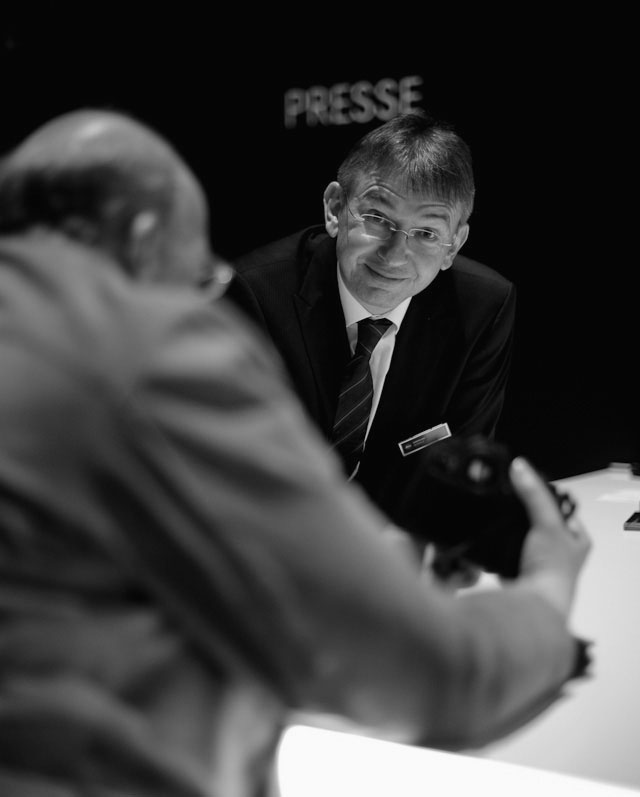
Leica S demonstration at the Photokina 2012 by Stefan Schulz who has been the midwife of the Leica S system since the S2 prototype. © Thorsten Overgaard.
Before the Leica S
By Thorsten Overgaard
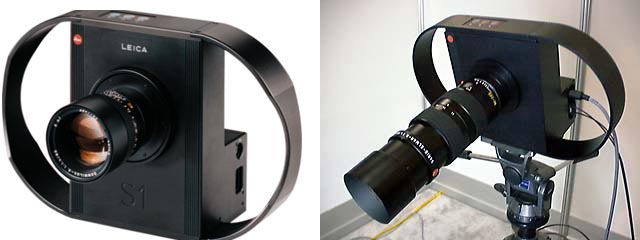
Early S: In 1996, as the digital photography revolution began, Leica introduced its Leica S1 digital camera to the market. The biggest of the three versions (Pro, Alpha and Highspeed) packed a 36x36mm sensor as 75 megapixels – quite something cosidering the digital SLR cameras had from 1 to 4 MP back then. The Leica S1 was meant as a studio camera that delivered a digital scan (30-60 seconds) directly to an Apple computer (using Silverfast software), and thus not a camera made for carrying around. The price was about $30,000 and 146 was made of them. The Leica S1 took Leica R and M lenses, as well as Hasselblad, Nikon, Canon, Minolta, Zeiss, Olympus, Pentax, Sinar and Mamiya.
Leica S1 Pro 5140 x 5140 pixels 185 seconds scanning time.
Leica S1 Alpha 2750 x 2750 pixels 75 seconds scanning time.
Leica S1 High Speed 4000 x 4000 pixels 18 seconds scanning time.

Thorsten Overgaard Leica photography books
Enjoy some of the inspiring books by Thorsten Overgaard. See the overview here, or simply start with one of the bessellers, "A Little Book on Photography"
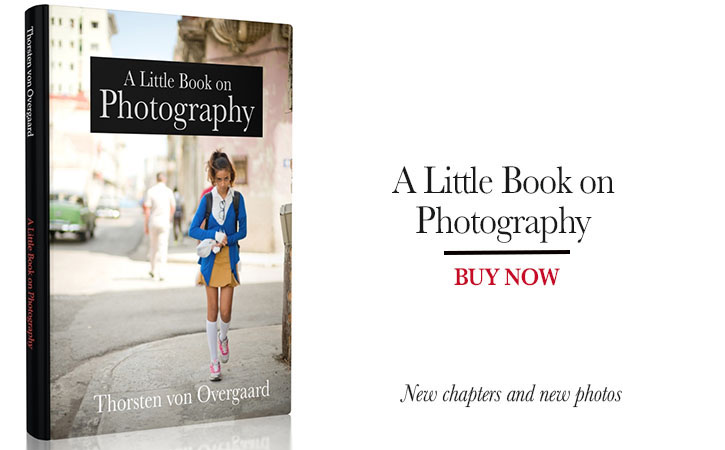

| |
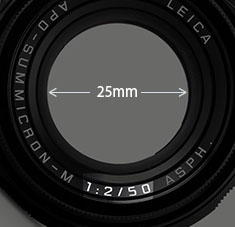 |
| |
1:2/50 the description says. But what does it mean? |
| |
|
1: - Basically means 1 divided with. But why is it on the front of the lens? If you look close, a lens will often say 1:2/50mm on the front, meaning it is a 50mm lens with an f/2.0 apterture. The 1: itself is a ratio, that indicates that the aperture diameter (25mm) is the ratio of 50mm divided with 2.
It's a strange way of writing product information on modern products, but here's how it's right:
a) A lens is called a 50mm lens because there is 50mm from the sensor to the center of focus inside the lens.
b) A lens is f/2.0 when the widest opening is 50mm divided with 2 = The lens opening is 25mm in diameter at it's widest. Had it been an f/2.8 lens (1:2.8/50), the widest aperture opening would be 50mm divided with 2.8 = 17.8mm.
AEL = Auto Exposure Lock. This is a function that can be used when you want to reframe the scene, but keep the current exposure from changing. By default the Leica Q locks both Exposure and Focus when you press the release button half down.
AFL = Auto Focus Lock. This is a function that can be used when you want to reframe the scene, but keep the current focusing from changing. By default the Leica Q locks both Exposure and Focus when you press the release button half down.
AF = Auto Focus. The idea is that the camera does the focusing itself (the word auto comes from Greek "self").
AF Assist Lamp = The little red lamp on the front of the Leica Q that will light up in dark places so as to help the Auto Focus to see in the dark. If you put a hand in front of the lens and press the shutter release button you can see it in action.
Aperture = The f/ stop on the camera that regulates how much light passes through the lens. On a f/1.7 lens the lens is fully open" at f/1.7. At f/2.0 the aperture inside the lens make the hole through the lens smaller so only half the amount of light at f/1.7 passes through. For each f/-stop (4.0 - 5.6 - 8.0 - 11 - 16) you halve the light. The aperture of the lens is basically the focal length divided with the f/-stop = size of the hole (28mm divided with f/1.7 = the hole is 45 mm).
ORIGIN: Late Middle English : from Latin apertura, from apert- ‘opened,’ from aperire ‘to open’.
| |
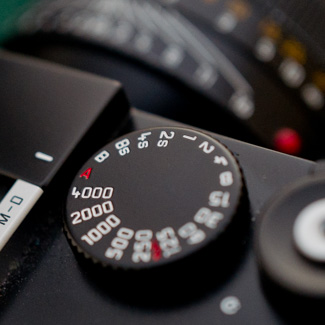 |
| |
The camera in Aperture Priority Mode |
| |
|
Aperture Priority Mode. When the shutter speed dial on top of a Leica camera is set to A, it is short for “Aperture Priority” and allows the user to set a specific aperture value (f-number) while the camera selects a shutter speed to match it that will result in proper exposure based on the lighting conditions as measured by the camera's light meter. In other words, you set the aperture as priority (f/1.4 for example), and the camera calculates a shutter speed (1/250 of a second) that matches that. If you change the aperture to f/2.0 by changing the aperture ring on the lens, the camera will re-calculate the speed to 1/125 so as to get the same amount of light to hit the sensor (f/2.0 is half the light through the lens as f/1.4 and 1/125 if twice the amount of light on the sensor as 1/250).
| |
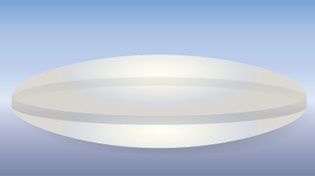
spherical (ball) |
| |
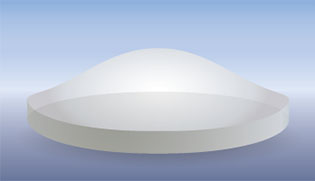
a-spherical (non-ball) |
| |
|
ASPH = (Aspherical lens) stands for "aspheric design".
Most lenses have a spherical design - that is, the radius
of curvature is constant. These are easy to manufacture by
grinding while "spinning" the glass. This design
however restricts the number of optical corrections that can
be made to the design to render the most realistic image possible.
ASPH lenses (a-spherical, meaning non-spherical), however, involve usually 1 element that does
*not* have a constant radius of curvature. These elements
can be made by 1) expensive manual grinding, 2) molded plastic,
or 3) Leica's patented "press" process, where the element
is pressed into an aspherical ("non-spherical")
shape. This design allows Leica to introduce corrections
into compact lens designs that weren't possible before. Practically,
the lens performs "better" (up to interpretation)
due to increased correction of the image, in a package not
significantly bigger than the spherical version.
There is another Aspherical lens manufacture technique: an uneven coating layer is applied to a spherical lens. The coating is thicker on the edges (or on the center, depending). Canon "Lens Work II" calls these "simulated" aspherical lenses. Simulated and Glass-Molded (GMo) asphericals show up in non-L Canon lenses, while the L lenses have actual ground aspheric elements.
A- means non, or without. From Latin, ex.
Sphere: ORIGIN Middle English : from Old French espere, from late Latin sphera, earlier sphaera, from Greek sphaira "ball".
| |
|
|
 |
| Normal spheric lens (grinded) |
|
ASPH (note the shape of the glass as result of pressing rather than grinding) |
Auto- means “self”. The idea is that when a camera has auto-(something), it does that (something) by itself.
Banding = Noise in digital images. Horizontal lines in a horizontal picture (if the camera is in portrait mode/vertical, the lines will obviously be vertical). It's simply noise; the result of uncontrolled algorithms working overtime with an image the sensor really can't see because it's very dark. (If your image has vertical lines in it, it is more likely that the sensor needs remapping).
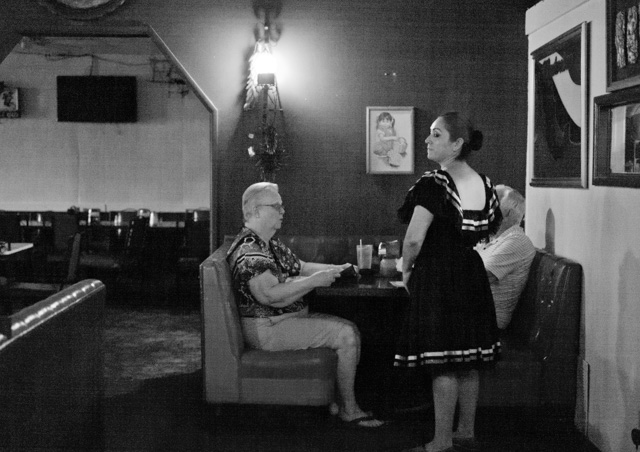
This image at 6400 ISO, underexposed and then brought up to correct exposure in Lightroom, displays banding: Horizontal lines in the image. Leica M-D 262 with Leica 50mm APO-Summicron-M ASPH f/2.0.
Base ISO = The ISO the digital sensor was born with. Even a digital sensor goes from say 50 ISO to 25,000 ISO, it only has one base ISO. Any other setting is an algorithm that figures out how the image whould look if there was 64 times more light, or half the light, etc.
When you go down from Base ISO (for example 200 to 100 ISO), you can expect a
decrease in quality. When you go up, the decrease is much less. For some sensors, you loose 2-3 stops by going down 1 step in ISO, but can go 8 steps up and only loose 1 stop in dynamic range. Basically, your ISO range should be from Base ISO and as far up as you can, before you see visible decrease in quality (mostly 3200 ISO - 6400 ISO).
Base ISO for Leica M9 is 160 ISO, for Leica M240 it is 200 ISO. For Leica M10 it is around 160 ISO. For Leica M Monochrom it is 320 ISO. For Leica Q and Leica Q2 it is around 100 ISO. For Panasonic Lumix S it is 200 ISO. For most Canon cameras the base ISO is around 100, for most Nikon cameras it is around 200 ISO.
Bokeh = The visual quality of the out-of-focus areas of a photographic image, especially as rendered by a particular lens: It's a matter of taste and usually photographers discuss a 'nice' or 'pleasant' bokeh (the out-of-focus area is always unsharp, which is why the quality discussed is if one likes the way it renders or not by a particular lens). The closer you get to something, the 'more' bokeh' you get (in that the focus becomes less for the background and foreground at close distances than at long distances). ORIGIN from Japanese 'bo-ke' which mean 'fuzzines' or 'blur.'.
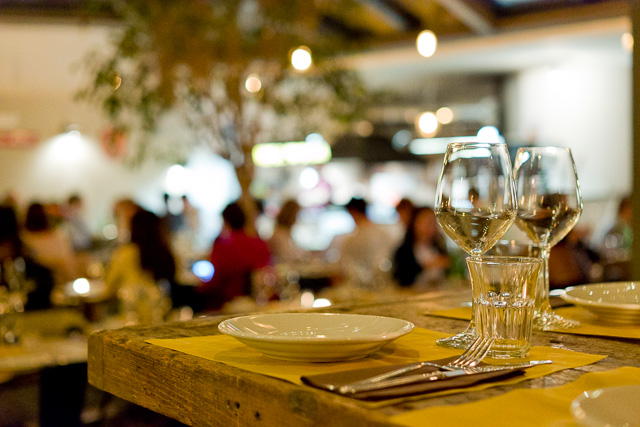 Bokeh: The visual quality of the out-of-focus areas of a photographic image. Photo at Bar del Fico in Rome. Leica TL2 with Leica 35mm Summilux-TL ASPH f/1.4. © 2017 Thorsten Overgaard. Bokeh: The visual quality of the out-of-focus areas of a photographic image. Photo at Bar del Fico in Rome. Leica TL2 with Leica 35mm Summilux-TL ASPH f/1.4. © 2017 Thorsten Overgaard.
Camera - is today’s short name for Camera Obscura (meaning “a dark room”). Camera means Chambre and was used only as a Latin or alien word, actually only for Spanish soldiers’ rooms, until popularized in connection with photography in 1727: “Camera Obscura”. In 1793 the slang term “camera” was used by Sterne Tr. Shandy: “Will make drawings of you in the camera” and by Foster (1878), “The eye is a camera”. Camera Obscura was described by Iraqi scientist Ibn-al-Haytham in his book, “Book of Optics” (1021) and by Leonardo da Vinci in 1500; popularized and made widely known in 1589 by Baptista Porta when he mentioned the principle in his book “Natural Magic”. Johannes Kepler mentions Camera Obscura in 1604.
Camera = chambre (room), Obscura = dark (or cover).
| |
|
|
| |
Why is it called a "camera"..?
The word Camera is today's short name for Camera Obscura (which originally means “a dark room”).
Origin of the word Obscura means "dark" or "covered", and the word Camera means Chambre and was used originally only as a Latin or alien word, actually only for Spanish soldiers' rooms, until popularized in connection with photography in 1727: “Camera Obscura”.
In 1793 the slang term “camera” was used by Sterne Tr. Shandy: “Will make drawings of you in the camera” and by Foster (1878), “The eye is a camera”.

Ibn-al-Haytham mentioned Camera Obscura in his "Book of Optics" in 1021.
The concept of Camera Obscura was described by Iraqi scientist Ibn-al-Haytham in his book, “Book of Optics” (1021) and by Leonardo da Vinci in 1500; popularized and made widely known in 1589 by Baptista Porta when he mentioned the principle in his book “Natural Magic”. Johannes Kepler mentions Camera Obscura in 1604.
Camera = chambre (room), Obscura = dark (or cover). |
|
| |
|
|
C = Continuous shooting. In the menu of the Leica Q2 under the menu point Continuous Shooting you can define if the Continuous should be Low (3 fps), Medium (5 fps) or High (19 fps).
Central Shutter = Some lenses, for example the Leica S lenses and the Leica Q where a shutter is located in the lens itself. In most cameras there is a shutter curtain just in front of the sensor, and in SLR (Single Lens Reflex) cameras there is also a mirror in front of the shutter curtain.
In the Leica T/TL/TL2 the shutter is in front of the sensor, but only acts to "refresh" the sensor. In the Leica TL2, there is a mechanical shutter curtain from 30 sec. to 1/4000 shutter times, and digital shutter from 1/4100 to 1/40,000 shutter times. A digital shutter is simply "turning on/off the recording of the sensor.
CMOS sensor (as used in Leica CL, Leica T/TL/TL2, Leica M 240, Leica M Monochrom Typ 246, Leica S Typ 007, Leica SL, Leica Q, Leica Q2, Leica M10, Leica X, Leica D-Lux, etc.) = (Complimentary Metal Oxide Semiconductor) chips use transistors at each pixel to move the charge through traditional wires. This offers flexibility because each pixel is treated individually. Traditional manufacturing processes are used to make CMOS. It's the same as creating microchips. Because they're easier to produce, CMOS sensors are cheaper than CCD sensors. CMOS allow Live View and use less energy than CCD.
Contrast - The degree of difference between tones in a picture. Latin contra- ‘against’ + stare ‘stand.’
CS = Central Shutter = As in the Leica S lenses for the Leica S where a shutter is located in the lens itself. In most cameras there is a shutter curtain just in front of the sensor, and in SLR (Single Lens Reflex) cameras there is also a mirror in front of the shutter curtain.
In the Leica Q and Leica Digilux 2 the shutter is in the lens which makes the camera mirrorless as well as very quiet because there is not a metal shutter curtain going up and down in front of the sensor.
Depth - Distance between front and back. Distance from viewer and object.
Digital Zoom = Refers to zooming in on a scene digitally. All that happens is that the camera zooms into the area of the sensor and records only that. The quality will be less as it's a smaller part of the same recording. Zoom is originally used for an optical zoom lens where optics move inside the lens so as to enlarge the subject optically. This does not reduce the image quality/resolution the same way as digital zoom does. Generally, digital zoom can be performed on any picture later in the computer as it's in essence simply a crop.
In the Leica Q Digital Zoom refers to the possibility to change the crop from 28mm to 35mm or 50mm (and for the Leica Q2, 75mm as well). Choosing a different "digital zoom" simply shows frame lines for the chosen focal length in the EVF and in the final image (that is in fact the full 28mm frame), there is a pre-selected crop for the chosen frame when you open the image in Lightroom or Capture One Pro.
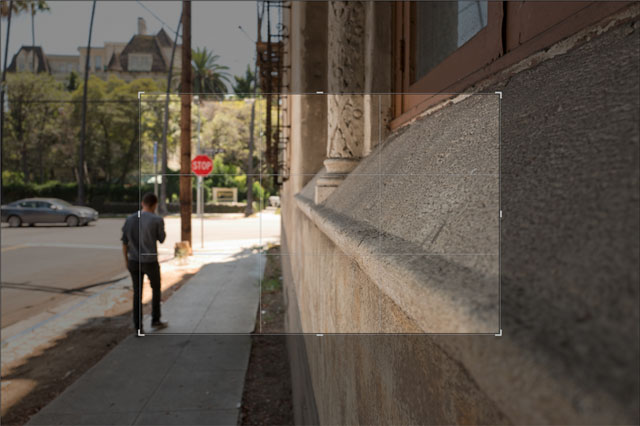
Digital zoom is in essence a crop of the image to make the scene appear closer. © 2017 Thorsten Overgaard.
Digital Shutter = A digital shutter is simply "turning on/off the recording of the sensor. In the "old days" this had to be done with an actual mechanical shutter curtain; a metal curtain in front of the sensor (or film) that goes up for 1/125th of a second, for example. In the Leica TL2, there is a mechanical shutter curtain from 30 sec. to 1/4000 shutter times, and digital shutter from 1/4100 to 1/40,000 shutter times.
DIS = Digital Image Stabilization. This is a feature often offered in video recorders and some times for tele lens still photography (so as to avoid motion blur when the lens is moving during slow shutter speeds).
| |
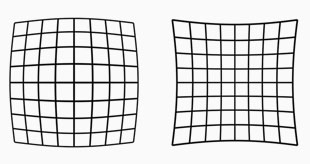 |
| |
Lens distortion looks like this. The lines are not straight. Our eye uses distortion correction. Lens designers can design lenses so they have very little distortion, or they can make less complicated lens designs and "fix" the distortion in software. |
| |
|
Distortion = In photo optics/lenses: When straight lines in a scene don't remain straight because of optical aberration.
Lens designers can correct for distortion to a degree so the whole image field is perfect corrected and all lines remain straight. In modern lens design many designs rely on Software Distortion Correction (SDC).
The eye adjusts for distortion so we always see vertical and horizontal lines straight when we look at things. Even when you get new prescription glasses (if you use such), you will often experience distortion in your new glasses. After a few days they eyes have adjusted for the glasses and the distortion you saw to begin with is now gone. Software Distortion Correction (SDC) is far behind what the human eye can perform of adjustments. (Also see my definition on Perspective for more on the eye and optics)
DNG = Digital Negative, an open standard developed by Adobe. It is a single file that contains the raw image data from the sensor of the camera as well as date, time, GPS, focal length, settings, etc.
The alternative is a RAW file + XLM file where the RAW file contains the image information and the XML contains the rest of information about where, how and when the picture was taken.
A Camera Raw profile (that is specific for that camera) in the computer helps the software program, for example Adobe Lightroom, to translate the RAW data into the image.
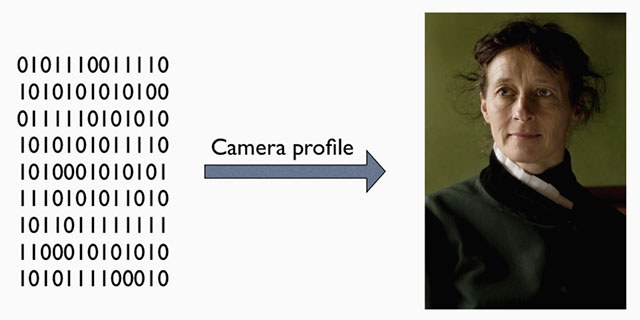
A raw file (or DNG) is simply the full recording of digital data (1's and 0's) from the sensor. In the computer, the sensor data is translated into the exact colors, via a camera profile.
DOF = Depth of Field. This is how much of the image will be in focus or "acceptable sharp". The DOF is determined by the subject distance (the farther away, the larger area is sharp; the closer the focus is, the less of the lage is sharp), the lens aperture (the depth of field is narrow at f/1.4 and larger at f/5.6) and the focal length of the lens (tele lenses has very narrow depth of field whereas wide angle lenses has a wide depth of field) and film or sensor size (small-sensor cameras has a wide depth of field wheras medium format or large format cameras has a very narrow depth of field). As an example, a Leica 21mm Super-Angulon-M f/3.4 lens is sharp all over the focus field from 2 meter to infinity when set at a distance of 3 meters at f/3.4. The DOF scale measurement on top of the Leica lenses shows lines for each f-stop that indicates from which distance to which distance the image will be sharp. Shallow DOF is a generally used term in photography that refer to lenses with very narrow focus tolerance (which can be used to do selective focus; making irrelevant subjects in the foreground and background blurry so only the subjects of essence are in focus and catches the viewers eye).
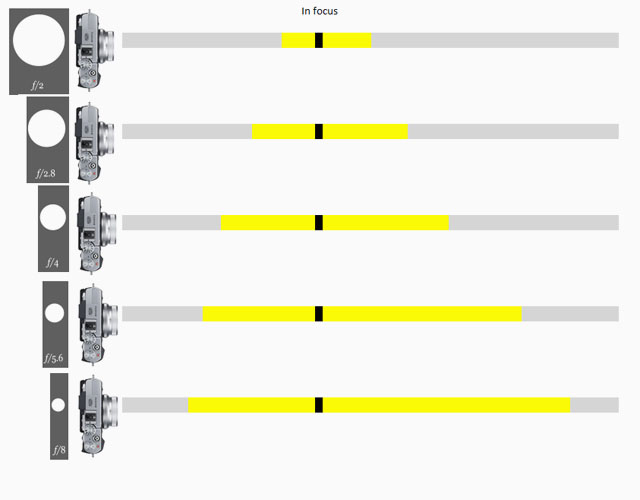
Depth Of Field scale from Fujifilm.
Dynamic range. The grade of ‘contrast range’ (or number of tones) a film or sensor, or simply a photograph, possess between bright and dark tones. The human eye is said to have a dynamic range of 10-14 ‘stops’ (but because we scan area by area and compile a concept of the overall scene, they eye is often thought to have a much higher dynamic range), Film used to have 7-13 ‘stops’ and some modern sensors have up to 15-17 ‘stops’.
EVF = Electronic ViewFinder. A viewfinder where you look at a small screen through optics/prisms. The advantage is that you see what the sensor sees.
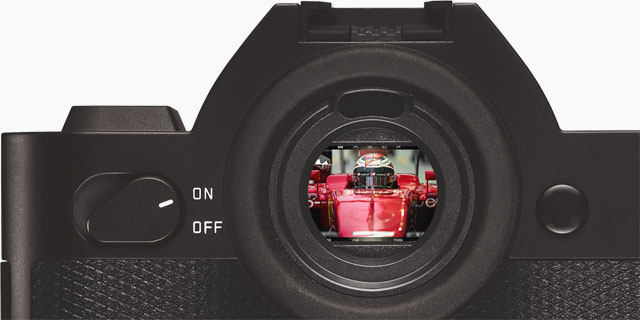
The EVF (Electronic Viewfinder) on the Leica SL 601.
Exposure Bracketing = The possibility to set the camera to automatically record a series of images where the exposure is above and below what the camera measures. The idea is that at least one of the images will be correctly exposed.
f/ (f-stop, also known as aperture).
f- (focal length). Often given in mm, for example 90mm. In the past they were often given in cm or inch, for example 9.5 cm or 3.2 inch.
f-stop = the ratio of the focal length (for example 50mm) of a camera lens to the diameter of the aperture being used for a particular shot. (E.g., f/8, indicating that the focal length is eight times the diameter of the aperture hole: 50mm/8 = 6,25 mm); or the other way around, the hole is the focal length divided with 8).
ORIGIN early 20th cent.: from f (denoting the focal length) and number.
One f-stop is a doubling or halving of the light going through the lens to the film, by adjusting the aperture riing. Adjusting the f-setting from f 1.4 to f.2.0 is halving the light that goes through the lens. Most Leica lenses has half f-stops to enable the photographer to adjust the light more precicely.
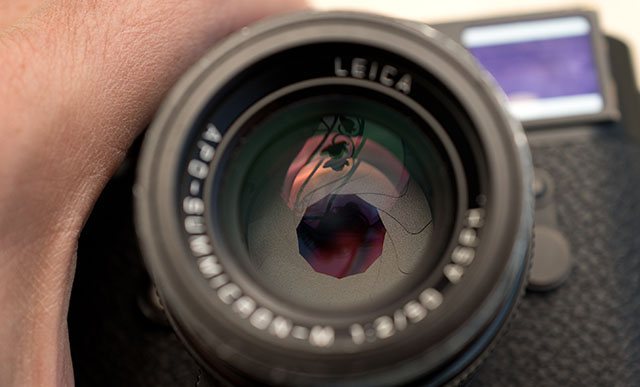 The aperture blades inside the lens is clearly visible in this photo by Eolake Stobblehouse. The aperture blades inside the lens is clearly visible in this photo by Eolake Stobblehouse.
Flare = Burst of light. Internal reflections between (and within) lens elements inside a lens. Mostly, flare has a characteristic "space travel" look to it, making it cool. Particularly in older lenses with less or no coating of the glass surfaces to suppress this, it can be a really cool effect. In newer lens designs, the coatings and overall design try to suppress flare and any reflections to a degree, so that there is seldom any flare to be picked up (moving the lens to pick up a strong sunbeam), but instead a "milking out" (or "ghosting") of a circular area of the frame; meaning simply overexposed without any flare-looking flares.
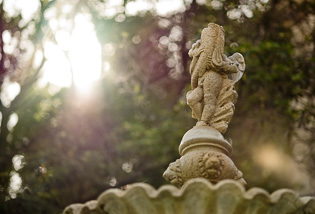 |
|
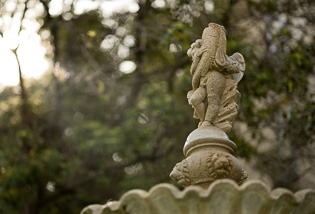 |
Sunlight creating (fairly supressed) flare in the bottom right quadrant of the image of a modern lens. |
|
The camera moved slightly to avoid the flare. |
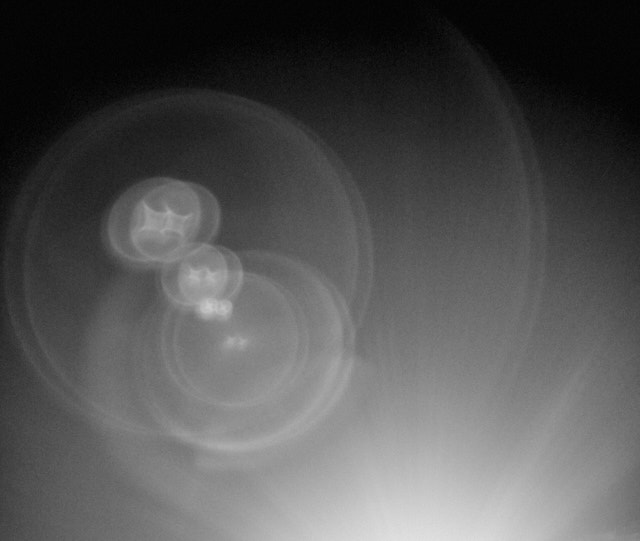
Older lenses with less coating, or without coating, are known to create flare that can look like this (Leica 50mm Summicron-M f/2.0 II Rigid model from the 1960's). © Thorsten Overgaard.
|
Fn = Short for Function. It's a button you can program. In the Leica Q it is by default set to be White Balance, so when you press it, you can choose which White Balance setting you want. You can press again and another function comes up. To complicate matters more, you can program the FN button to your own likes.
| |
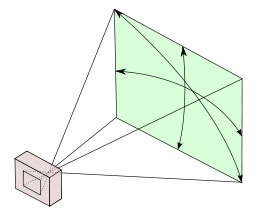 |
| |
A 28 mm lens has a 74° viewing angle |
| |
|
Focal length = On the Leica Q it is 28mm and originally referred to the distance from the sensor (or film in older days) to the center of focus inside the lens. Nobody uses that measurement, except those who construct lenses! For users of lenses, focal length refers to how wide the lens sees. The viewing angle, which is often given in for example 90° viewing angle for a 21mm lens, 74° viewing angle for a 28mm lens, 6° viewing angle for a 400mm lens, etc.
Each human eye individually has anywhere from a 120° to 200° angle of view, but focus only in the center.
Focus, in - Sharp and clear in appearance. Focus - “The burning point (of a lens or mirror)”. In Latin the word focus meant fireplace or hearth. The word was probably first employed outside of its Latin literal use as “the burning point of a lens or mirror” in optics, and then came to mean any central point. The German astronomer Johannes Kepler first recorded the word in this sense in 1604.
Full Frame (FF) = The size of the sensor is 24 x 36mm which is the format Oskar Barnack and Leica Camera AG invented with the first Leica that was introduced in 1925. Many other formats invented since, such as APS, APS-C and all usually refer to Full Frame ratio, by which it means what size they have compared to Full Frame.
| |
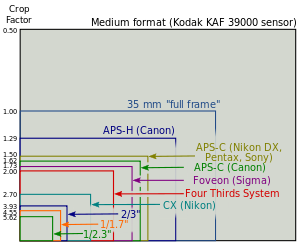 |
| |
Full Frame is "king of photography" |
| |
|
The 24 x 36mm Full Frame format is so "king of photography" that it has continued to be the ideal for all cameras. Besides this, there exists Large Format cameras such as 4x5" (100 x 125 mm) and Medium Format 6x6 (60 x 60mm amongst other sizes in that area).
Hue = A color or shade depending on the dominant wavelength of red, green or blue. The word Hue comes from Swedish hy which is "skin complexion". It is independent of intensity, so often (in computer editing programs for example), Hue is an adjustment along Saturation which is (intensity of color as compared to white).
ISO = Light sensitivity of the camera sensor is given in ISO (International Organization for Standardization). It's a standard that was used in film and is now used in all digital cameras also. The base ISO for the Leica Q sensor is 100 ISO which means that this is what the sensor "sees". All other levels are computer algorithms calculating the effect as if the sensor could "see" more (hence noise at higher ISO levels).
ISO goes in steps of doubling: When the ISO is raised from 100 ISO to 200 ISO, the camera only need half the amount of light to make a picture. For each step in ISO to 400, 800, 1600, 3200, etc the light sensitivity is doubled for the sensor (and the camera sensor only need half the light of the previous ISO to record the same image).
JPEG = A standard for picture format made in the 1990's by Joint Photographic Experts Group). Mostly referred to as JPG as in L1003455.JPG which would be the name for a JPG file from the camera.
Summilux = Refers to the maximum lens aperture - normally f1.4 , "-lux" added for "light" (ie. the enhanced light gathering abilities). In the Leica Q the lens is a Summilux even it is a f/1.7 and not f/1.4.
| |
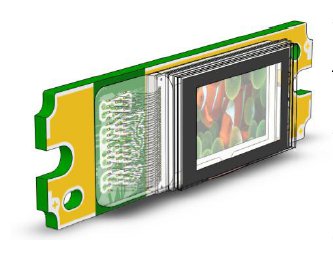 |
| |
LCoS display |
| |
|
LCOS (viewfinder screen in the Leica Q and Leica Q2) = Liquid crystal on silicon is a high-quality method for near-eye displays, better than LCD (Liquid-crystal display). There are two broad categories of LCoS displays: Three-panel and single-panel. In three-panel designs, there is one display chip per color, and the images are combined optically. In single-panel designs, one display chip shows the red, green, and blue components in succession with the observer's eyes relied upon to combine the color stream.
Leica = A compound word derived from " (Lei)tz" and "(ca)mera". Apparently they were originally going to use "LECA", but another camera company already used a similar name in France, so they inserted the 'i' to prevent any confusion.
Lens hood = (also called a Lens shade). A tube or ring attached to the front of a camera lens to prevent unwanted light from reaching the lens and sensor. In the past where lenses were not coated to prevent internal reflections inside the lens, the lens hood was often essential. These days where lenses are coated, the shade serves just as much as decoration and protection (bumper) as well.
ORIGIN Old English hod; related to Dutch hoed, German Hut 'hat,' also to hat.
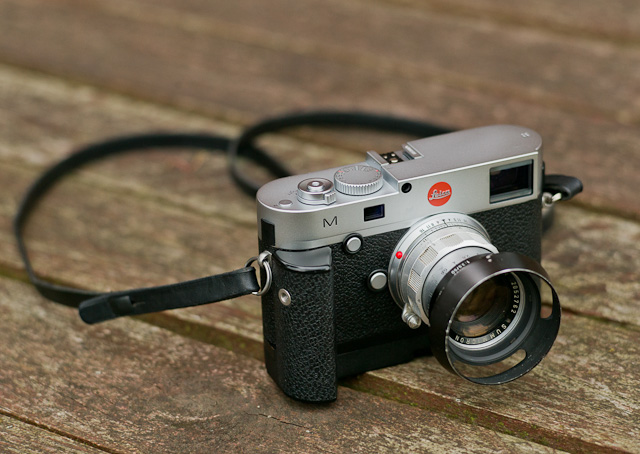
Lens hood or Lens shade attached to the front of the lens to prevent light rays from the side to hit the optics, which could introduce unwanted light and hence reduce contrast of the image. These days where lenses are coated, the shade serves as decoration and protection as well.
Level Gauge = This is a tool in the viewfinder to see if you hold the camera 100% horizontal and/or vertical. You can turn it on in the Menu > Photo Live View Setup > Level Gauge > On.
Light = Tiny particles called photons that behaves like both waves and particles. Light makes objects visible by reflecting off of them, and in photography that reflecting off of subjects is what creates textures, shapes, colors and luminance. Light in its natural form (emanating from the sun) also gives life to plants and living things, and makes (most) people happier. So far, nobody has been able to determine exactly what light is. The word photography means “writing with light” (photo = light, -graphy = writing). Read more about light in my book Finding the Magic of Light.
Live View = This is the ability to see the image the sensor see, live, via the screen of a digital camera, or via an electronic viewfinder (EVF).
MACRO = Macro lens. The Leica Q2 lens can be turned to Macro which enables you to go close so as to enlarge smaller subjects. The word macro comes from Greek makros ‘long, large.’
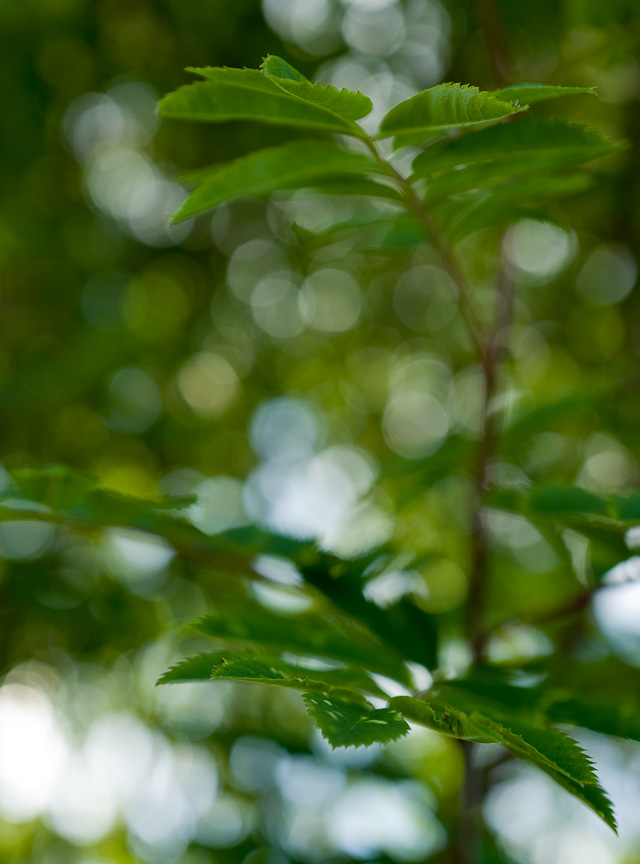
The word macro comes from Greek makros ‘long, large.’ Leica Q in Macro mode, 1ii ISO, f/2.8, 1/500 second. © 2015 Thorsten Overgaard.
Maestro II - A processor developed first as Maestro for the Leica S2 and upgraded to Maestro II for the Leica S (Typ 007). The Leica Q has a Mestro II (Leica Q edition) processor developed by SocioNext Inc. based on Fujitsu's Mibeault architecture.
Megapixel (or MP) - Millions of pixels. See pixel further down. How many units of RGB is recorded by a given sensor by taking height x widt. A Leica M10 delivers a 5952 x 3968 pixel file = 23,617,536 piexls. On a screen the resolution you choose determines the size of the image. Say you have a 5000 pixel wide file and your screen is set for 8000 pixels wide. Then the image will fill only the 5000 pixels fo the 8000 and the rest will be empty, If you then change the screen resolution to 5000 wide, the image would be able to fill out the whole screen.
Meßsucher (rangefinder or distance finder) = Mess = range, sucher = finder. It is always correctly written with the "ß". There are technically not three "s", rather the "ß" and one "s" because it is a word constructed by the combining of two precise words.
mm = millimeter(s), as in a 50mm lens. (Earlier in lens history lenses focal length was given in cm = centimeters; as in a 5 cm lens). For anyone used to centimeters and millimeters, it’s no wonder. But if you grew up with inches, feet and yards, you may have had a hard time grasping what a 50mm lens was. But as lenses were designed first in Europe, the metric system with centimeters and millimeters was used to describe lenses.
The reason a 50mm lens is a 50mm lens is that there is 50mm from the focus plane (the film or sensor) to the center of focus inside the lens. When photography was a young subject, it was engineers who made it all, and the users were expected to understand. The engineers were so into the making of the lenses, that it apparently never dawned upon them that today’s users would think of a 21mm lens as a wide angle lens rather than a lens where there is 21mm from the sensor to the center of focus inside the optics.
ND = Neutral Density filters are grey filters that functions as 'sunglasses' for lenses. They simply block the light so that a lens can work at for example f/1.7 in sunshine.
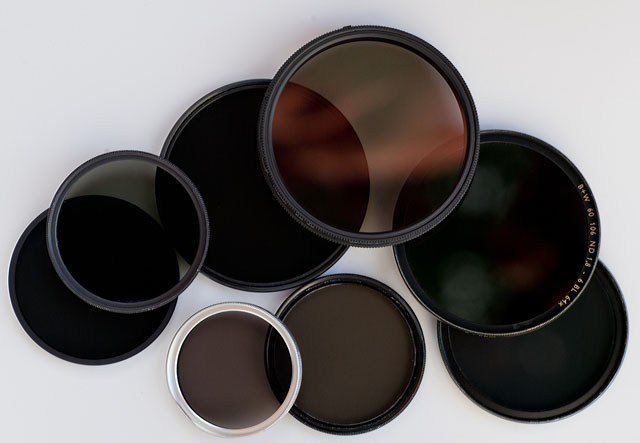
ND (Neutral Density) filters to put in front of lenses to reduce the amount of light that comes in. They don't have any other effect than that and doesn't change contrast, color or anything.
NFC = Near field communication is a technology that enables smartphones and cameras (or other devices) to establish radio communication with each other by touching the devices together or bringing them into proximity to a distance of typically 10 cm (3.9 in) or less.
| |
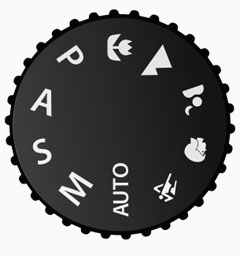 |
| |
PASM in the menu of the Leica Q is most likely is made up from the letters of a mode dial on a traditional camera. Nobody knows for sure. |
| |
|
PASM (screen mode) = Basically means that you are in control of the camera and haven't selected any of the Screen Modes available in the Leica Q menu. PASM is most likely short for P = Program Mode / A = Aperture Priority / S = Shutter Priority / M = Manual Control (... what Moron comes up with those silly abbreviation; and then don't explain them in the manual?).
Pixel - Made up word from Pix (picture) and el (element). A pixel is the smallest full-color (RGB) element in a digital imaging device. The physical size of a pixel depends on how you've set the resolution for the display screen. The color and tonal intensity of a pixel are variable, meaning that each pixel contains RGB. This is different from a camera sensor's small eyes (photosite) that are an intensity of either red, green or blue. You could say that the digital sensor's photosite (where each unit collects just one color; red, green or blue) is the input technology, whereas the pixels on a screen (where each pixel contains red, green and blue) is the output device. So while sensors are measured in megapixels (mega = million), it's their output unit of pixels, and not the input unit of photosites that is measured and stated. See illustration below.
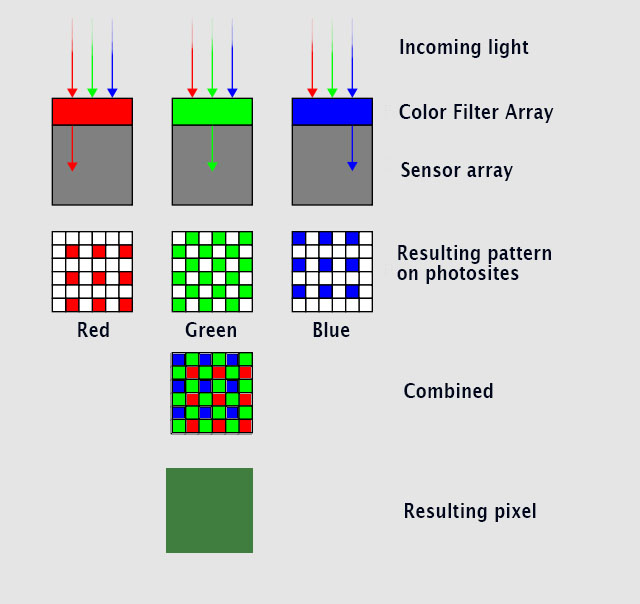
Here's an illustration of how light goes through a color filter that enables the underlying photosites to each record if it';s an R, G or B color - combined - makes up one pixel containing RGB. © Thorsten Overgaard.
S = Single image. When the ring by the shutter release on top of the camera (or in the menu of a digital camera in case it does not have this ring on the ourside) is moved from OFF to S, the camera takes only one photo at the time (Single). The other possibility is Continuous where the camera takes pictures continiously as long as the shutter release button is helt down. (see above).
Saturation: How colorful, intense or pure the color is. Less saturation would be less colorful, more saturation would be more colorful. In today’s photography, de-saturating a photo on the computer will gradually make it less and less colorful; and full de-saturation would make it into a black and white photo.
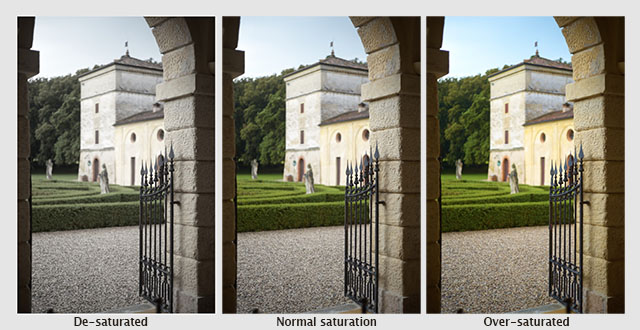
A photo from Verona, Italy de-saturated, normal saturated and over-saturated. © Thorsten Overgaard.
Sensor = A device that detects a physical property (like light) and records it. A camera sensor is a plane plate with thousands of small “eyes” with (photosites) a lens in front of each (CFA, Color Filter Array), which each individually records the amount of red, green and blue light rays that comes through the lens. Together, Red, Green and Blue form all colors of the spectrum, which becomes a pixel. Sensor comes from Latin sens- ‘perceived’.
Screen Mode = A menu point in the Leica Q that allow you to choose different pre-programmed ways of recording stills with the camera. For example Sunset, Snow/Beach, Fireworks, etc.
Nobody knows what the modes does but they sound helpful. Panorama (move the camera and it takes a series of images; just like iPhone) and Time Lapse (interval of images to record change) are also in the Screen Mode menu and may be useful. All screen modes are equally undefined in the manual, so all you can do is try and see if you can figure out what happened. PASM is the setting you use to avoid any pre-programmed modes (see above.
SDC = Software Distortion Correction. A correction of lens distortion (not straight lines) applied in the camera and which is part of the DNG or RAW file. In Lightroom or Capture One Pro the SDC of the camera file is applied automatically (and cannot be removed), in software like AccuRaw one can open the DNG file without the SDC correction. Sean Reid Reviews have written a good article on what SDC is and does in "Software Distortion Correction".
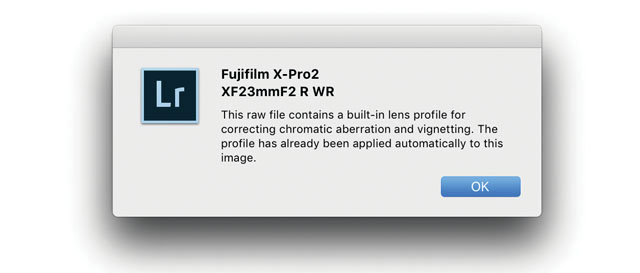
SDC (Software Distortion Correction): In Lightroom the correction profile for the Fujinon 23mm is applied automatically and cannot be turned off. If you go into Develop mode in Lightroom and look under Lens Correction > Profile, you will see a message in the bottom with an exclamation mark. When you click on that, you get the message above.
Shutter speed dial - The dial on top of the Leica M where you can set the shutter speed manually. It can also be set to A which stands for Aperture Priority (where the camera suggests a shutter speed; or when you move the dial away from A, the camera will show arrows in the viewfinder, suggesting which direction to change the Aperture to, to get the correct exposure).
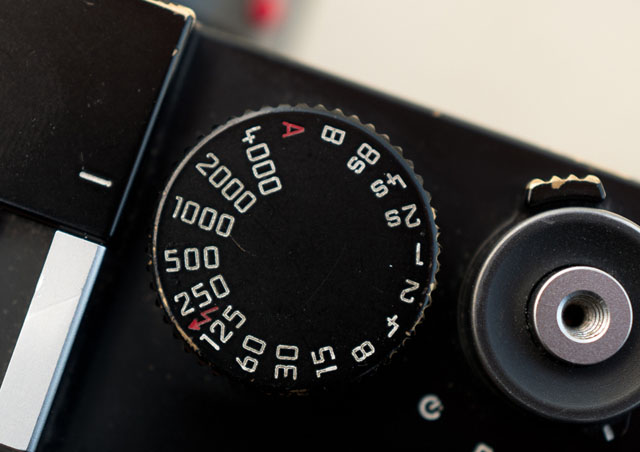
Shutter speed dial set to 1/1000 of a second.
SLR = Abbreviation for Single-Lens Reflex; the lens that forms the image on the film/sensor also provides the image in the viewfinder via a mirror. The Leica Q has no traditional viewfinder and no mirror. the image seen in the EVF is what the sensor sees.
Summilux = Refers to the maximum lens aperture - here f1.4 , "-lux" added for "light" (ie. the enhanced light gathering abilities). In Leica terminology a Summilux is always a f/1.4 lens and a Summicron is a f/2.0 lens. In the Leica Q2 the lens is f/1.7 but is called a Summilux because it is closer to f/1.4 than f/2.0.
Three-dimensional = Having the three dimensions of height, width and depth. In photography and lens design, three-dimensional effect is also the perception of even small micro-details; the texture of skin can appear flat and dead or three-dimensional and alive. Also, selective focus (foreground and background out of focus) can change the perception of depth. Also see Perspective.
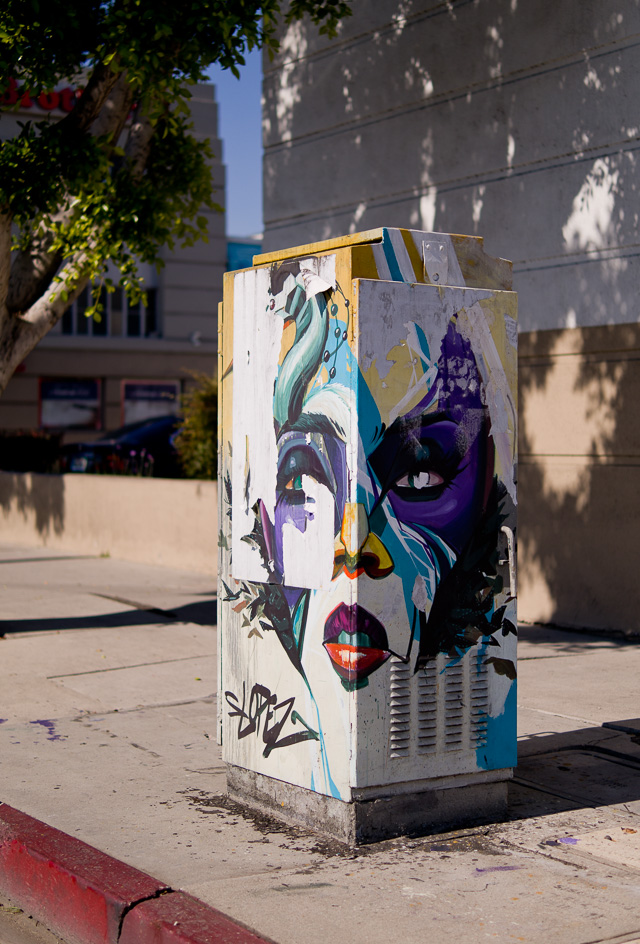
Three-dimensional = Having the three dimensions of height, width and depth. Melrose Avenue in Los Angeles. Leica TL2 with Leica 35mm Summilux-TL ASPH f/1.4. © 2017 Thorsten Overgaard.
Ventilated Shade - A shade is a hood in front of a lens that provides shade from light going straight onto the lens from outside what you are photographing, which could cause internal reflections like flare, which would make the picture less contrasty.
The ventilated shade has holes so it doesn't obstructs the view from the viewfinder. In many of today’s mirrorless cameras where there is no viewfinder looking ver the lens, so there is no actual need for a ventilated shade; but they are considered classic or vintage looking and are still in high demand. It makes no difference for the purpose of the shade (to create shadow) if it is ventilated or not.
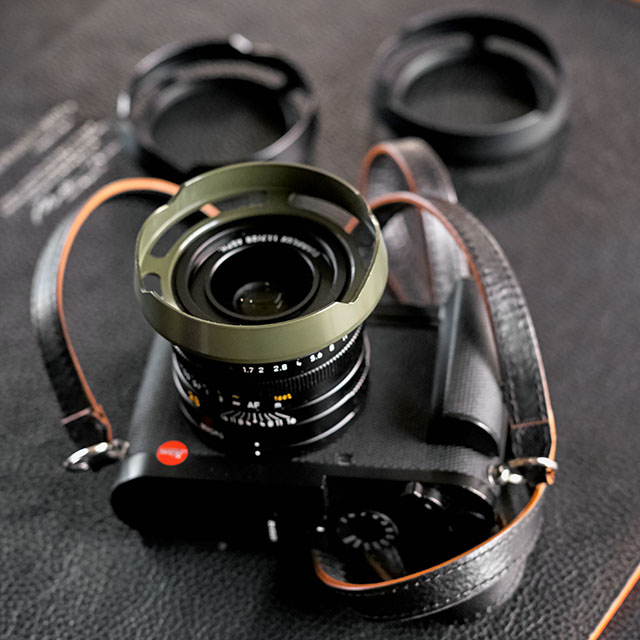
Ventilated Shade for the Leica Q. I make ventilated shades for most lenses and sell them from here.
Viewfinder = a device on a camera showing the field of view of the lens.
1) A built-in viewfinder in a camera that simply show the frame you get when you look through the viewfinder.
2) A rangefinder viewfinder which is also used to focus the lens. In Leica M cameras two pictures has to meet and lay 'on top of each other' for the picture to be in focus.
3) An external viewfinder, usually on top of the camera in the flash shoe, so as to show the field of view of lenses wider than what the built-in viewfinder can show (15mm, 21mm, 24mm, 28mm etc viewfinders exist)
4) Very simple "aiming-devices" on top of a camera that is simply a metal frame without any optics. Just a frame, as for example very old cameras (the original Leica), or when using cameras in diving where you can't look through the camera.
5) A Electronic Viewfinder (EVF) that shows what the sensor sees "live".

|
![]()
